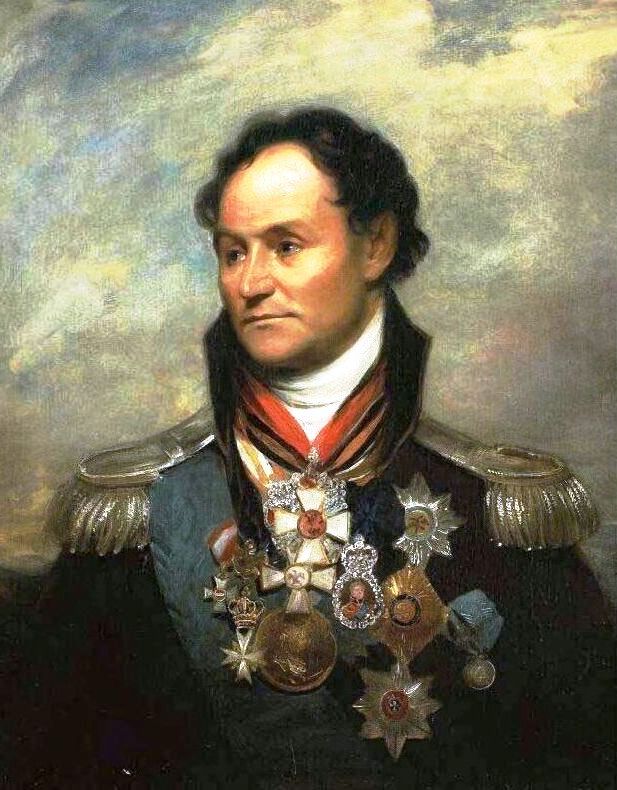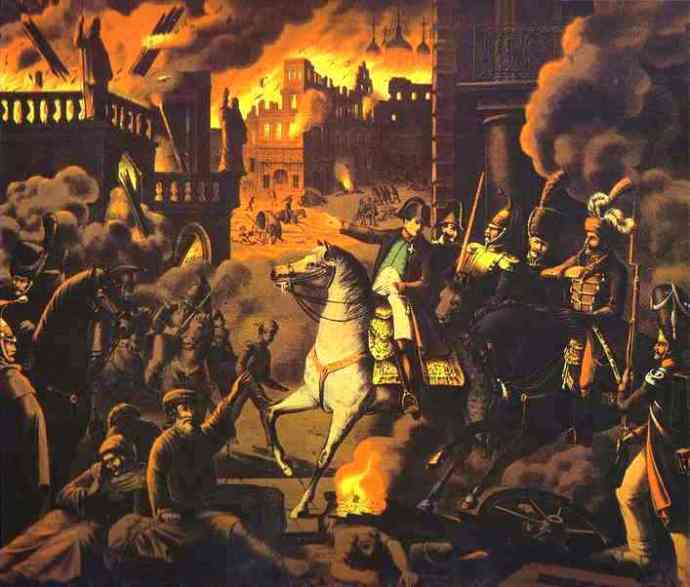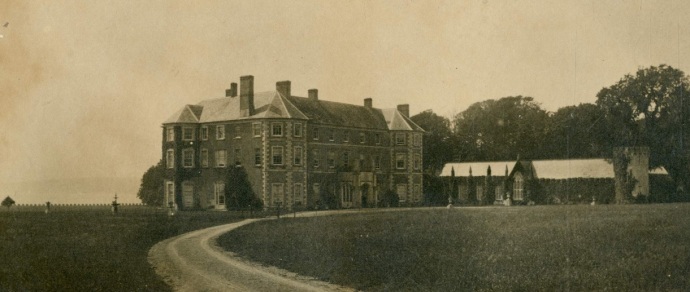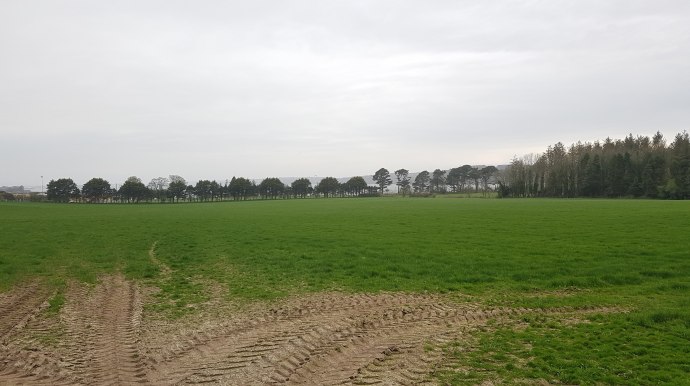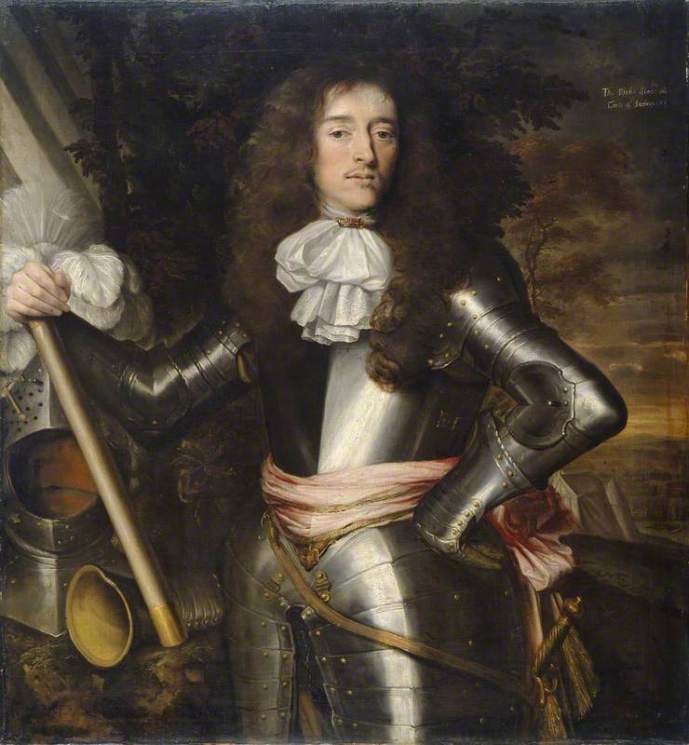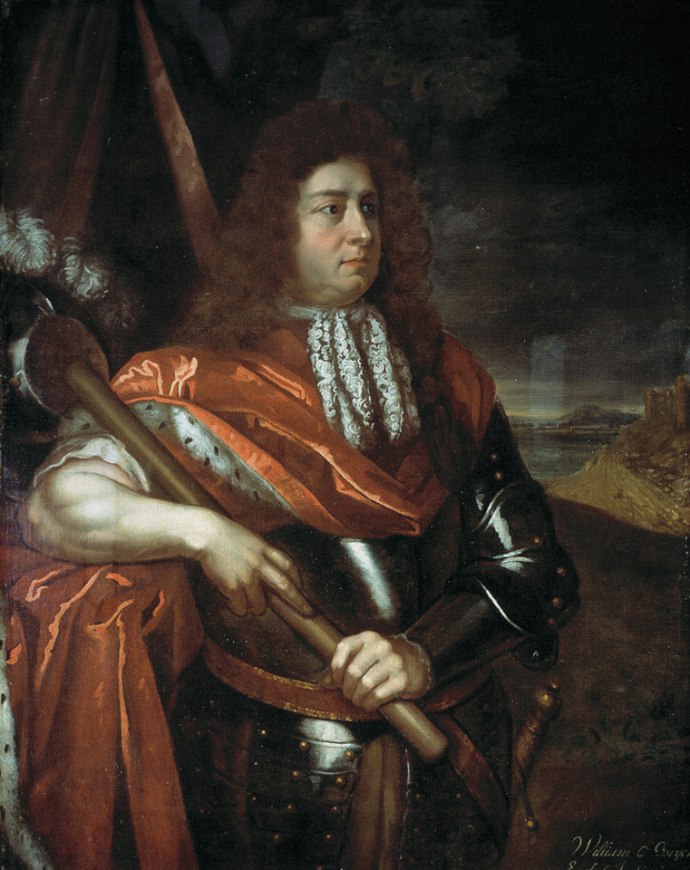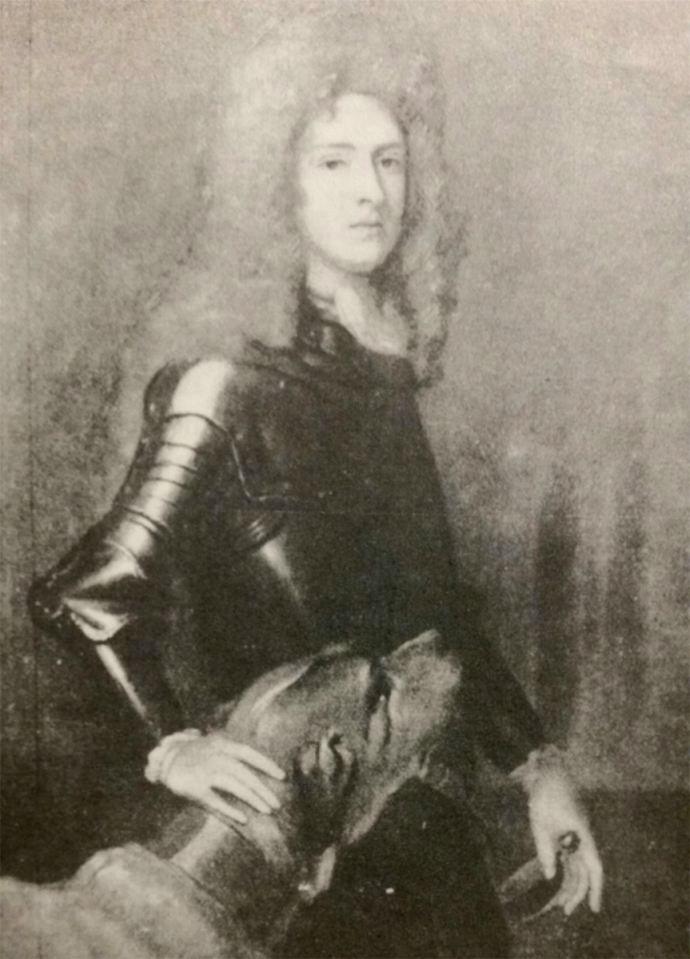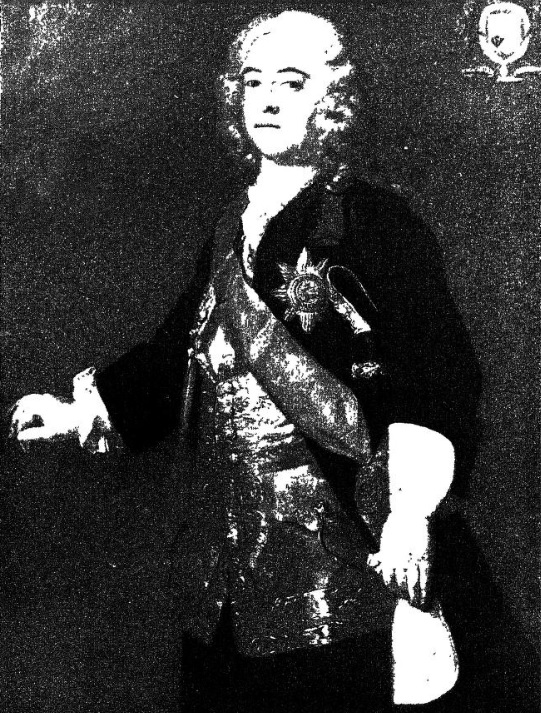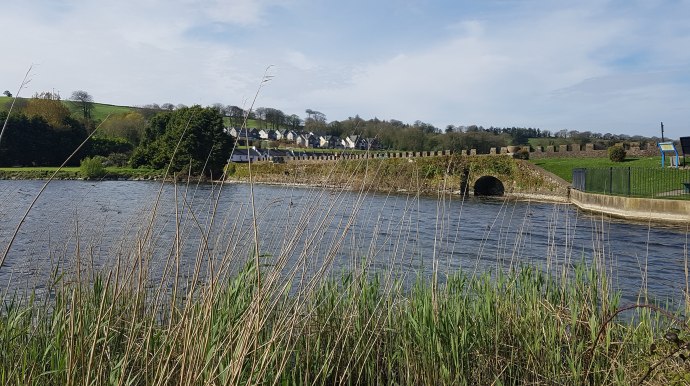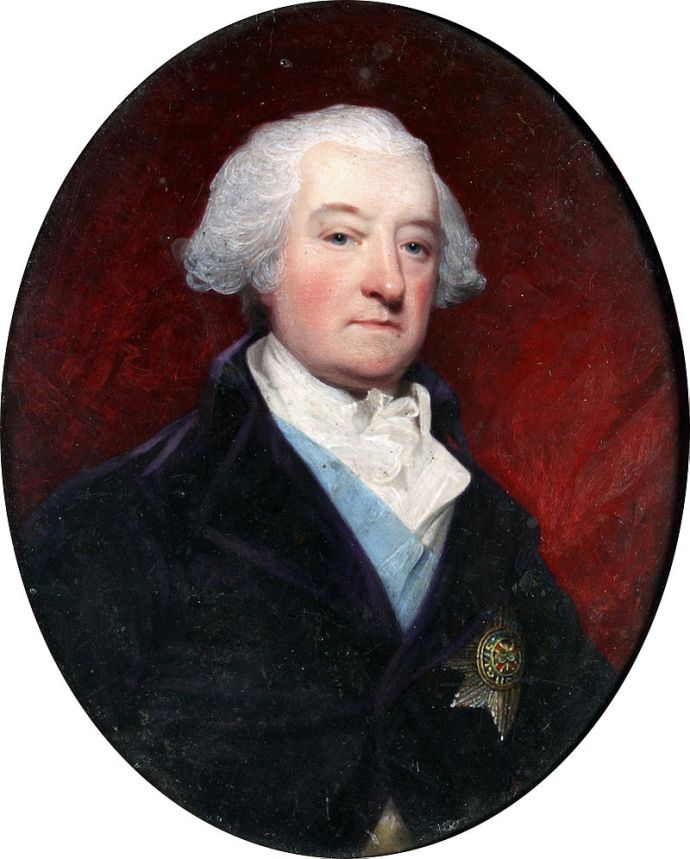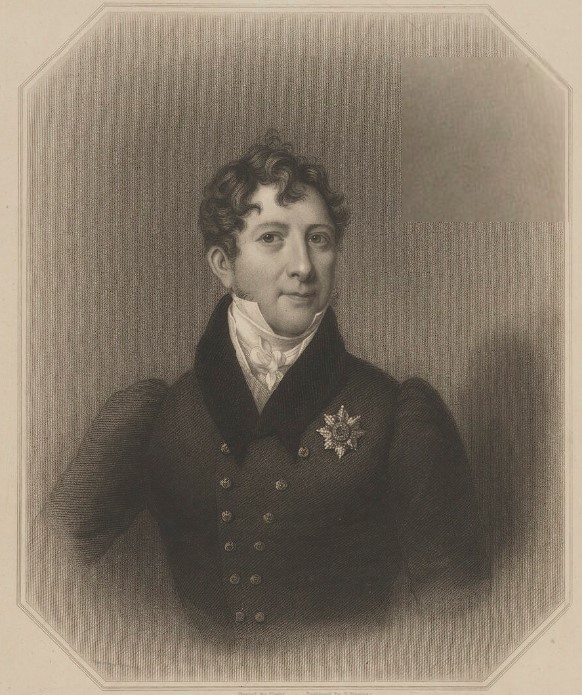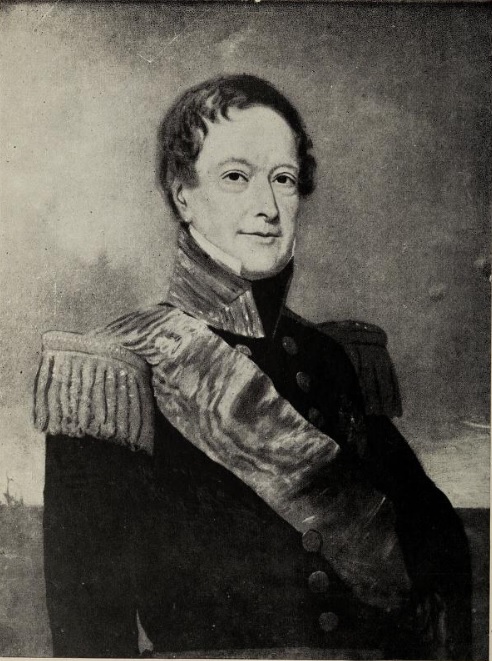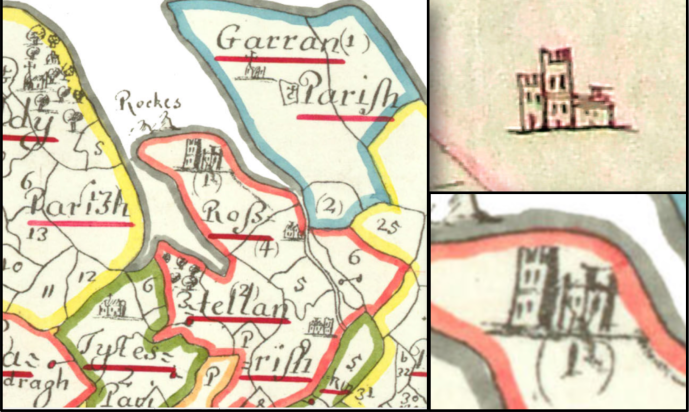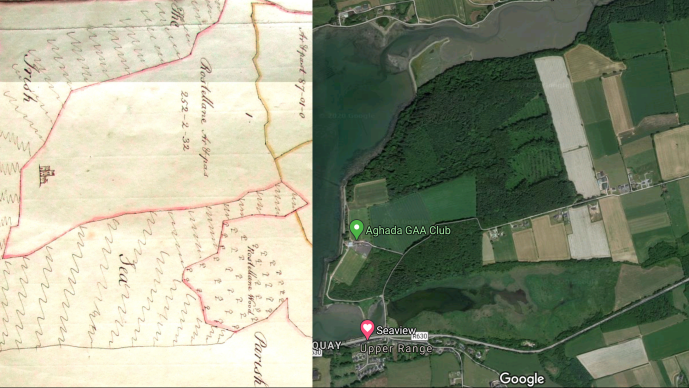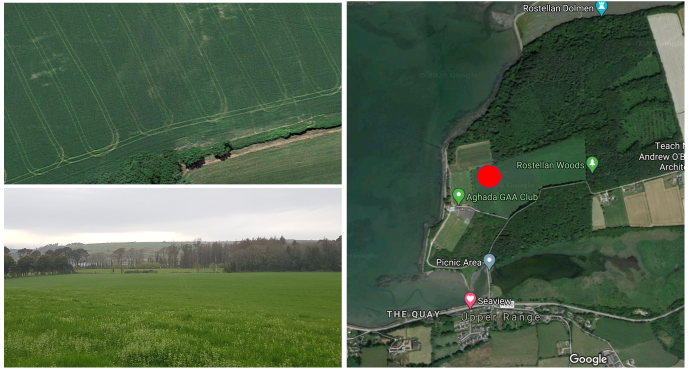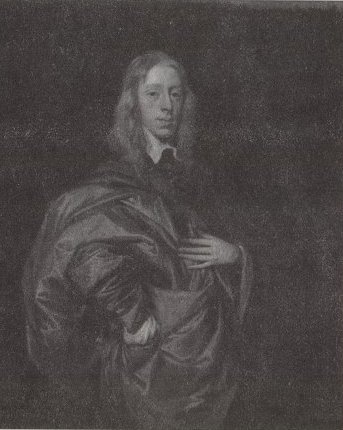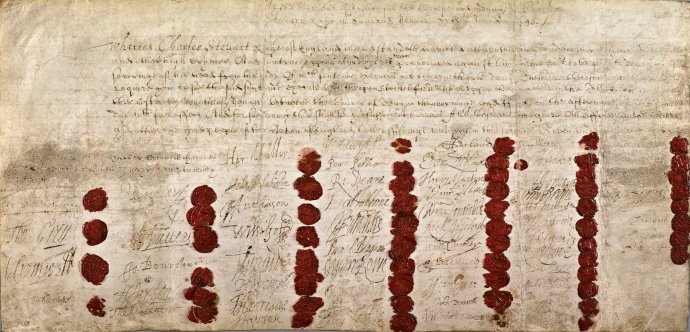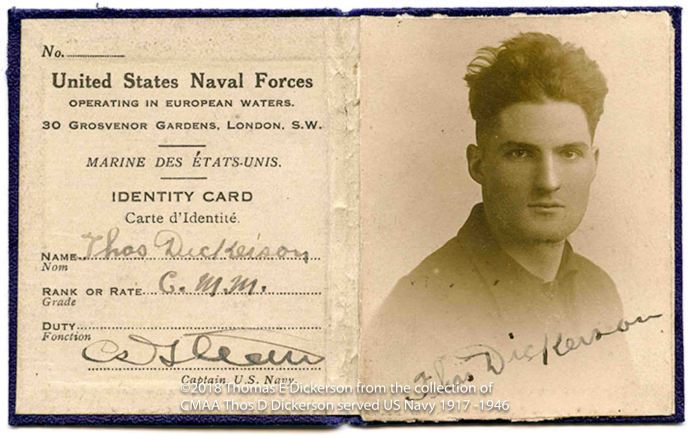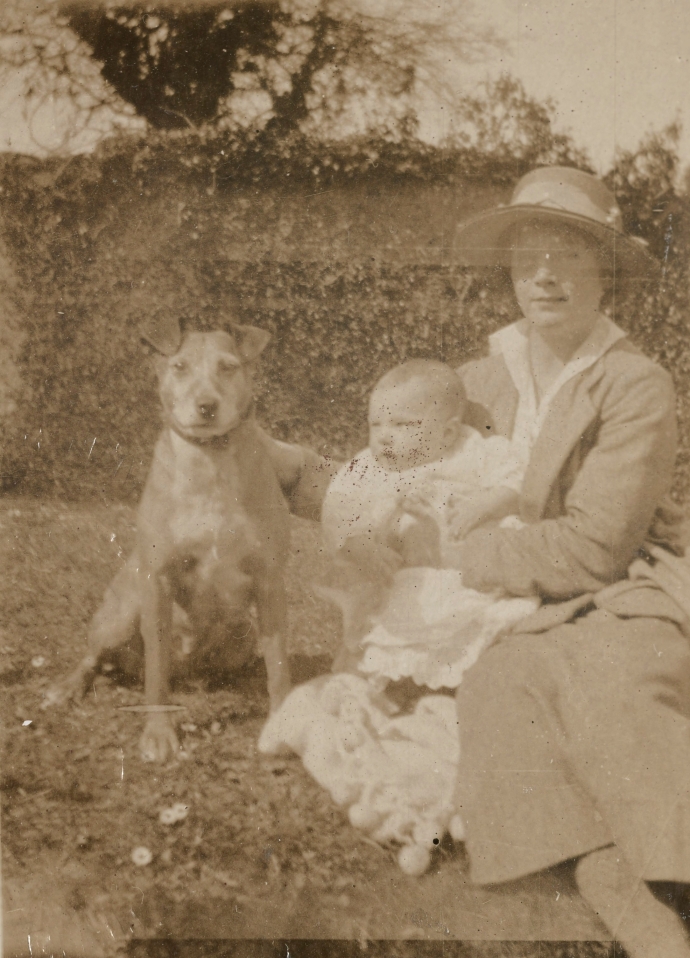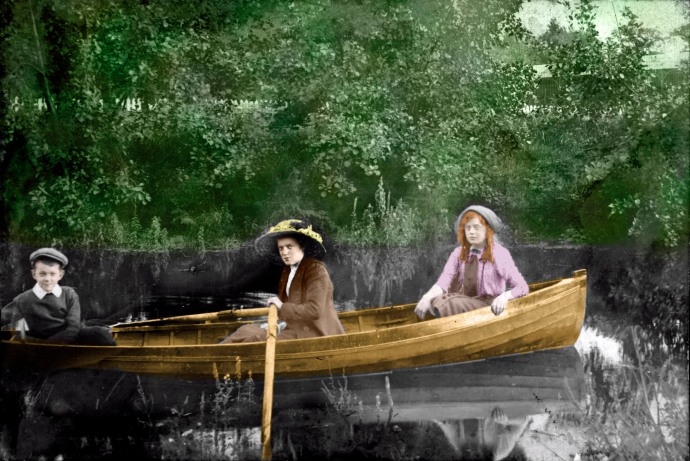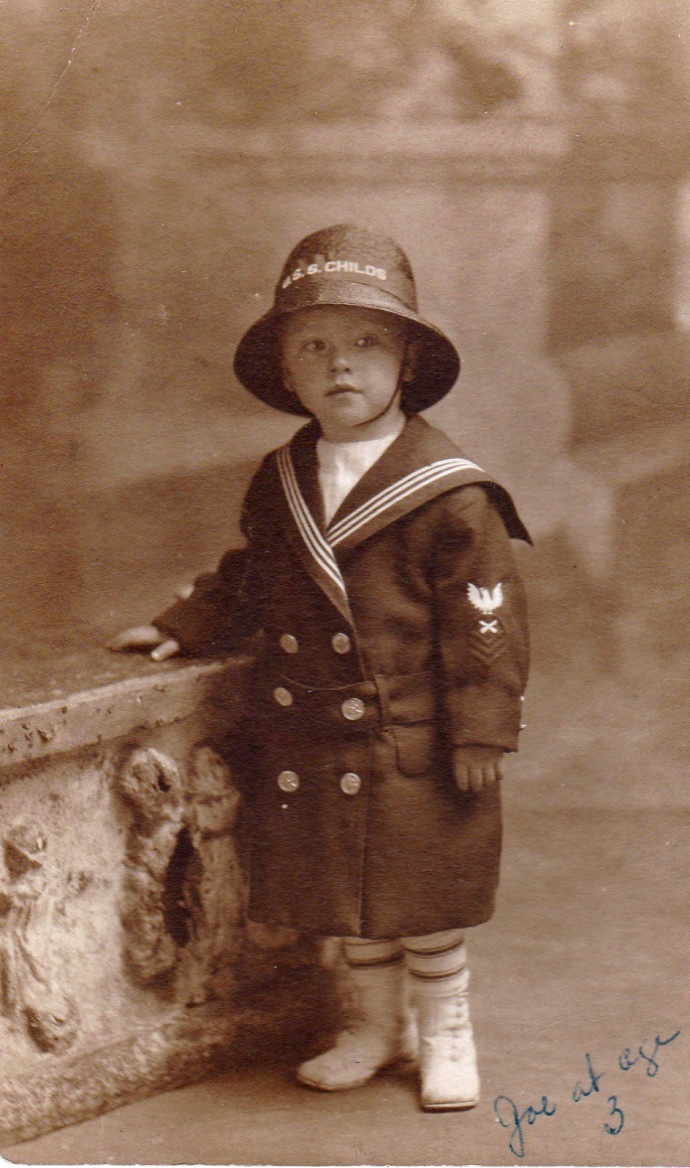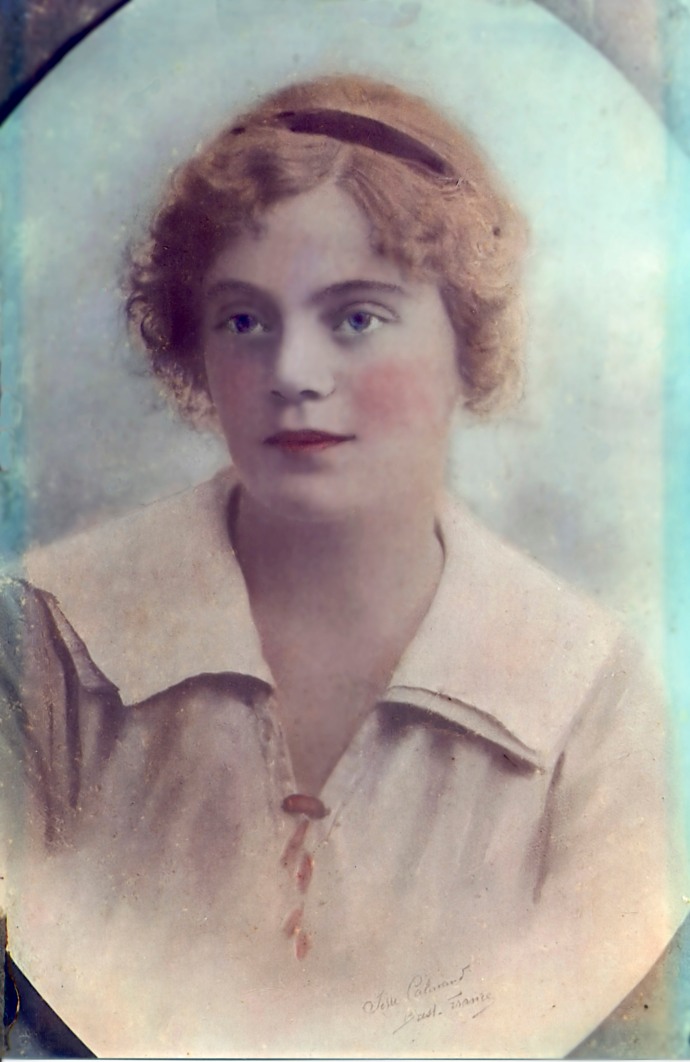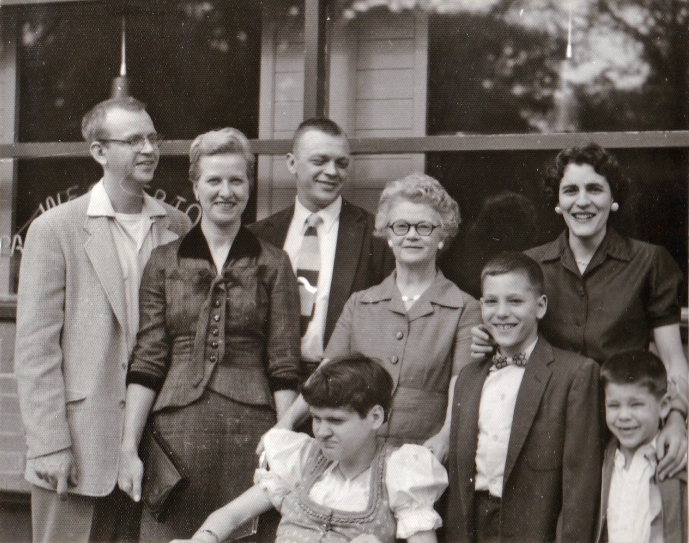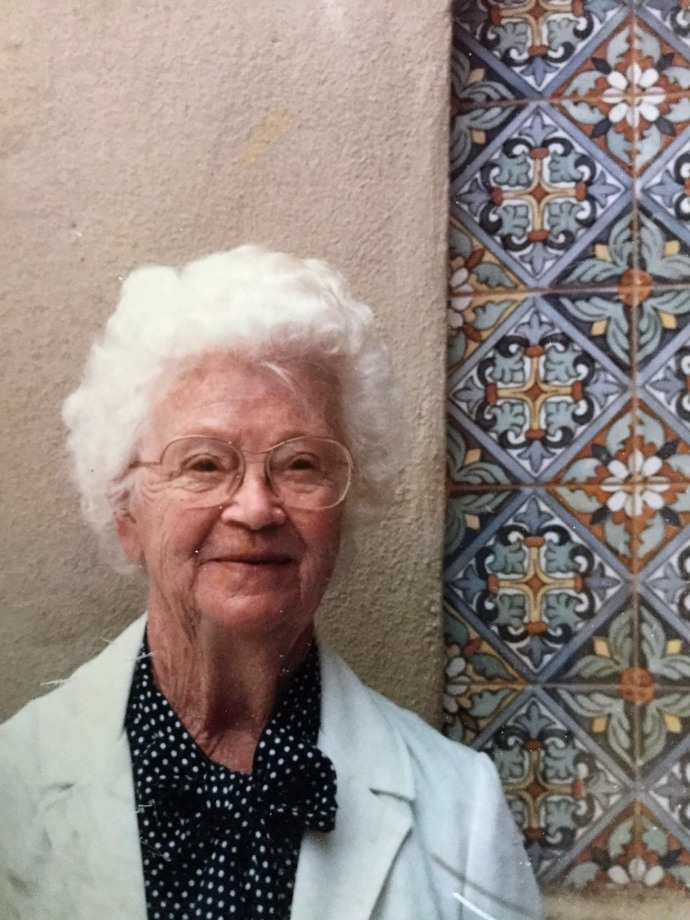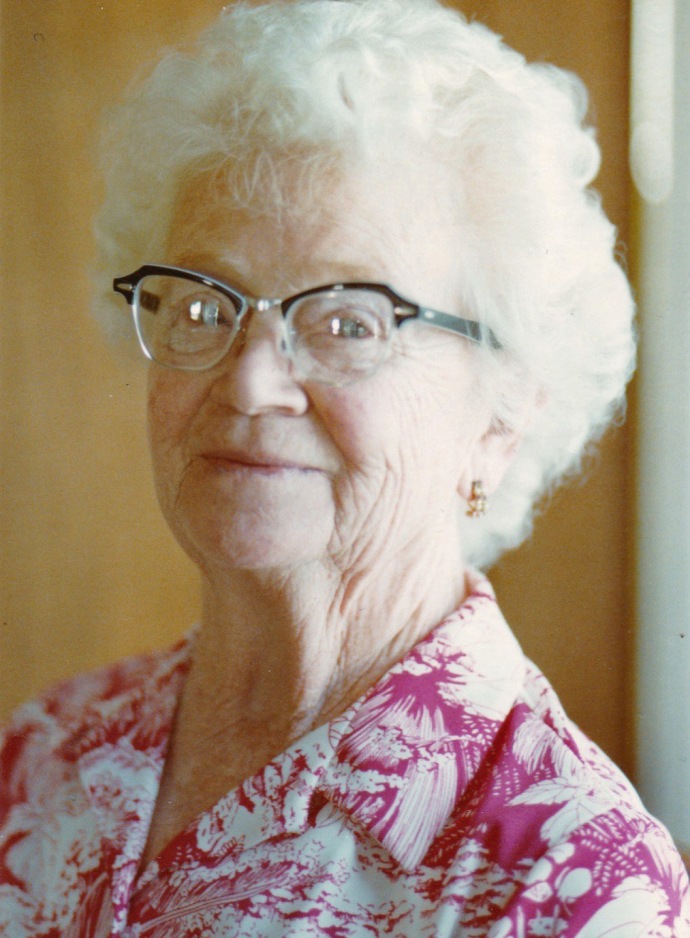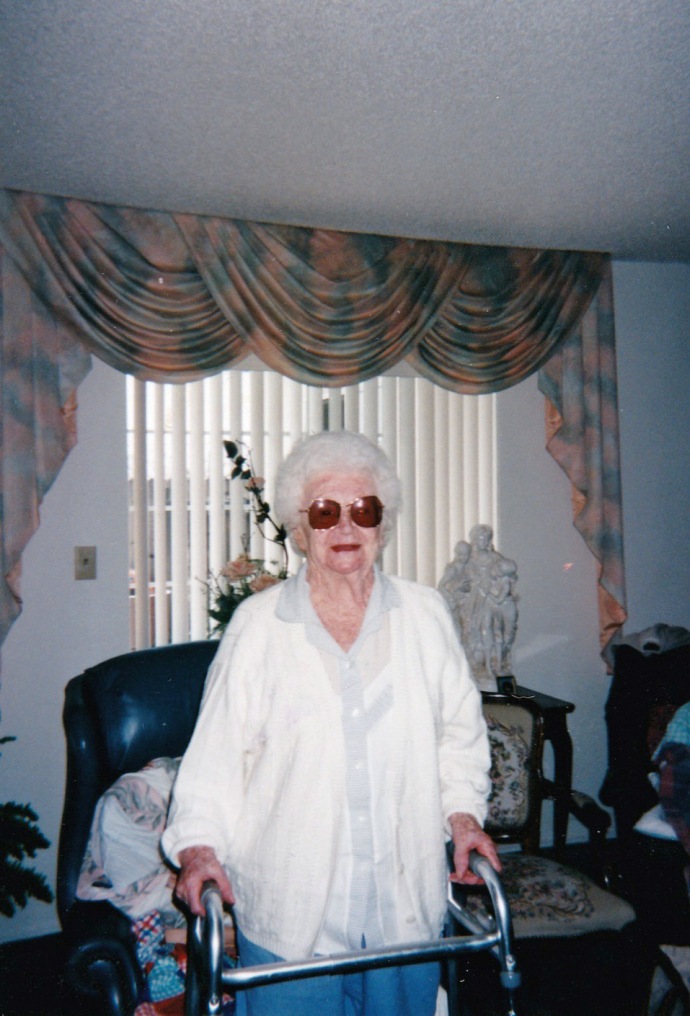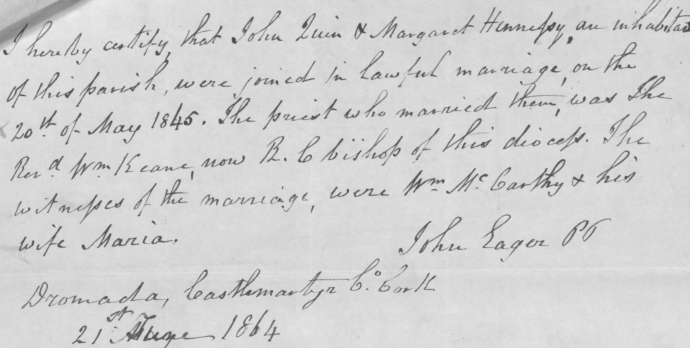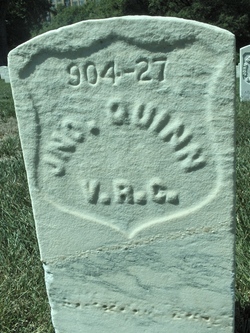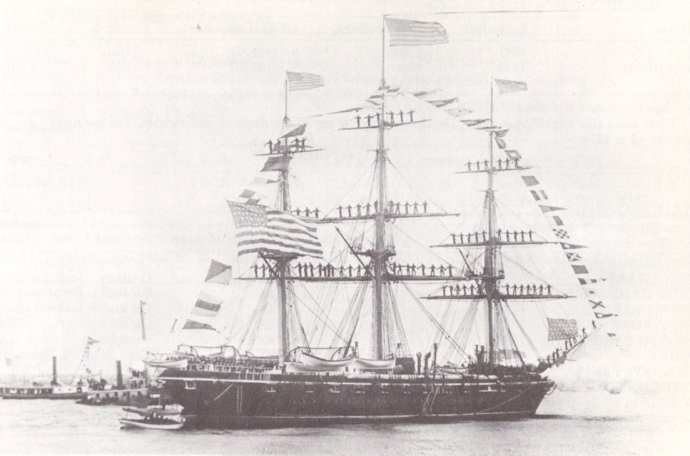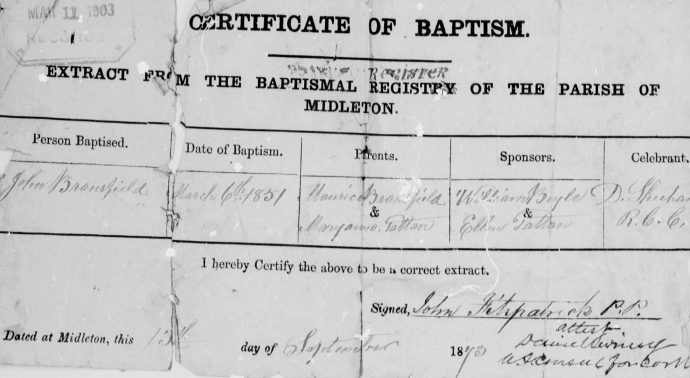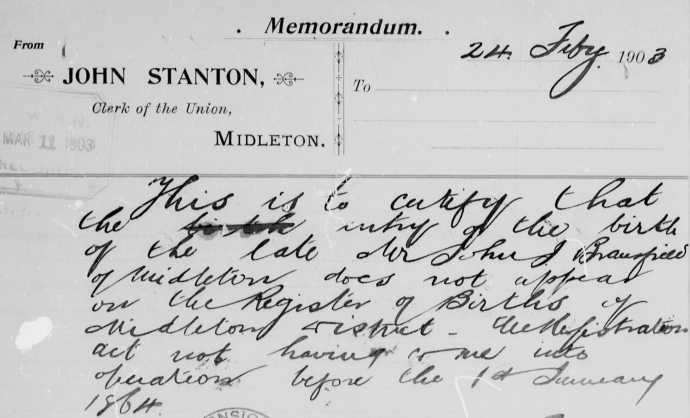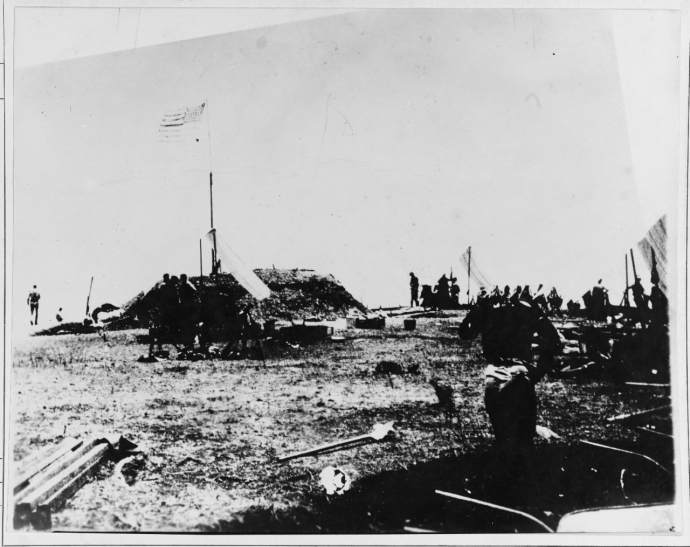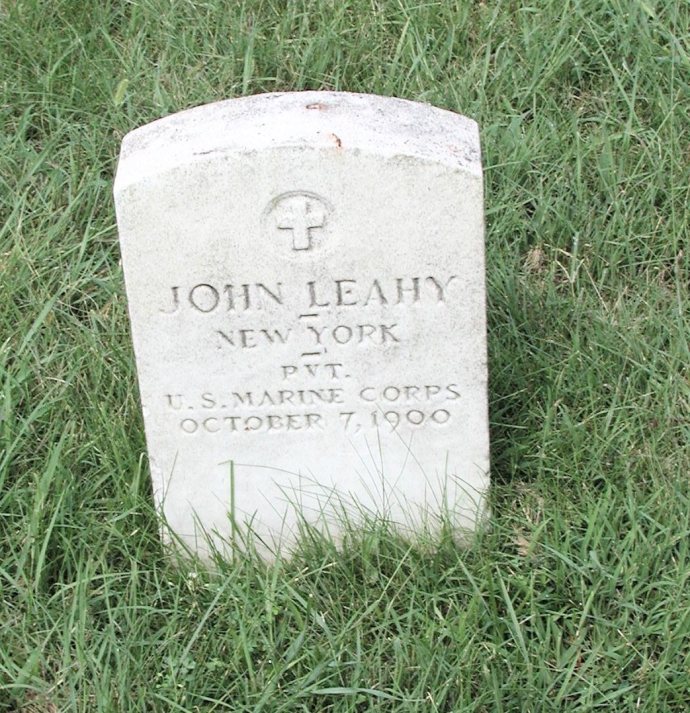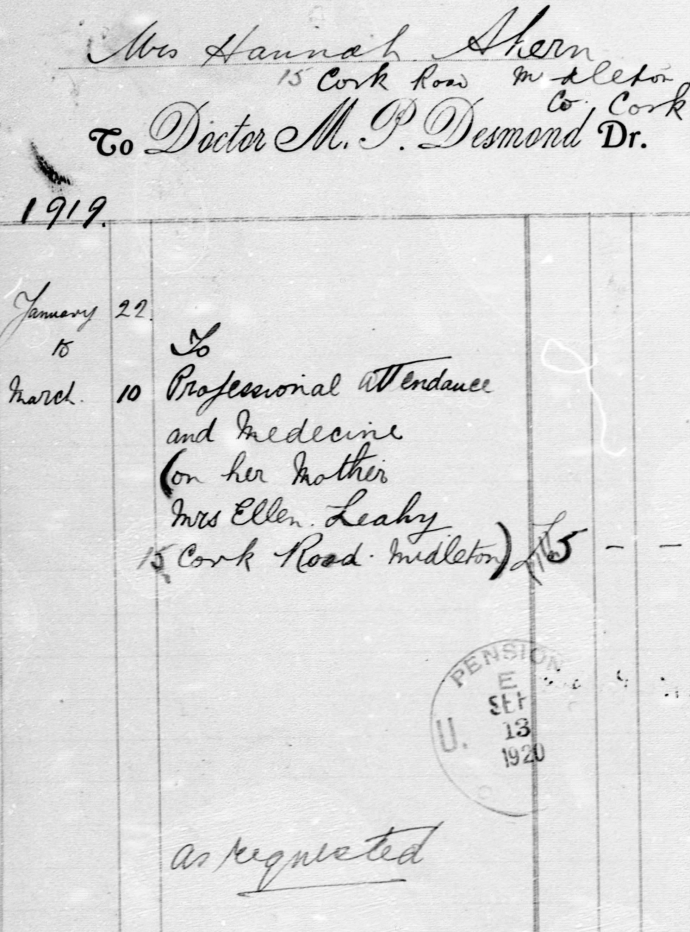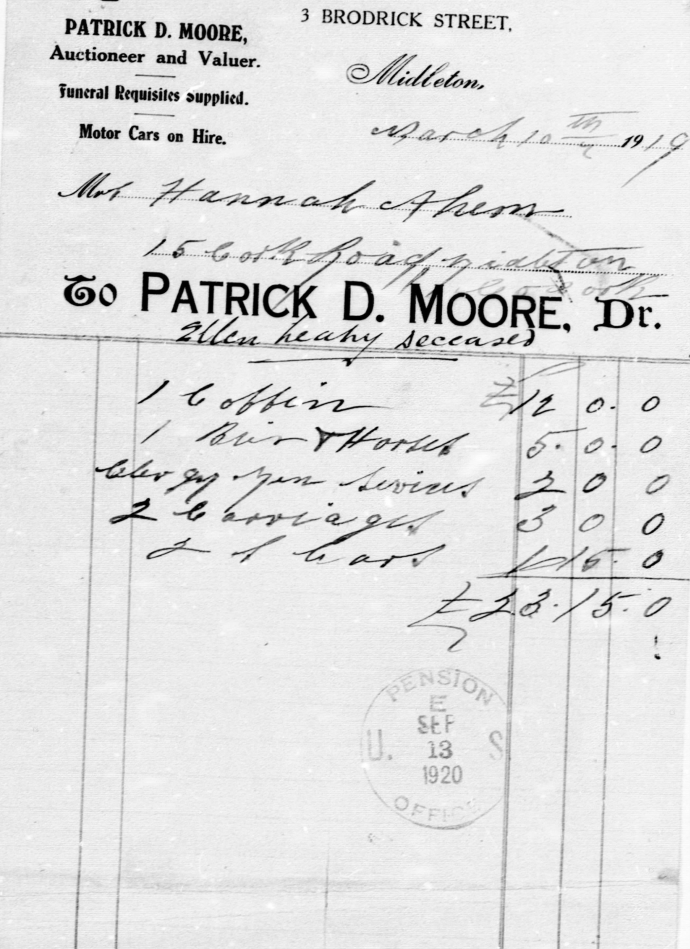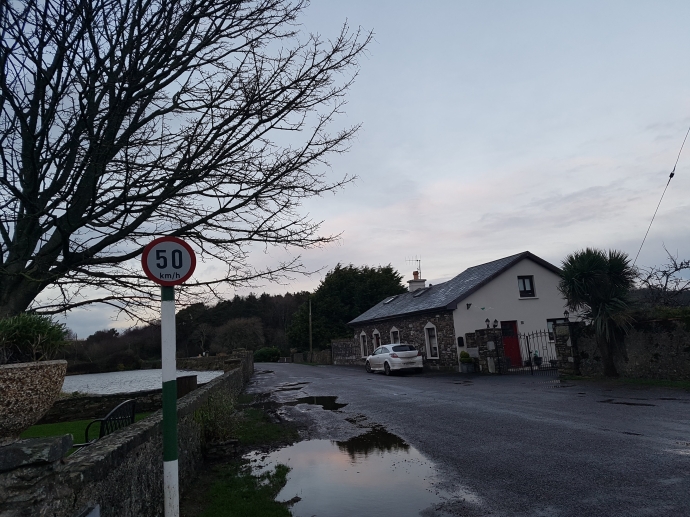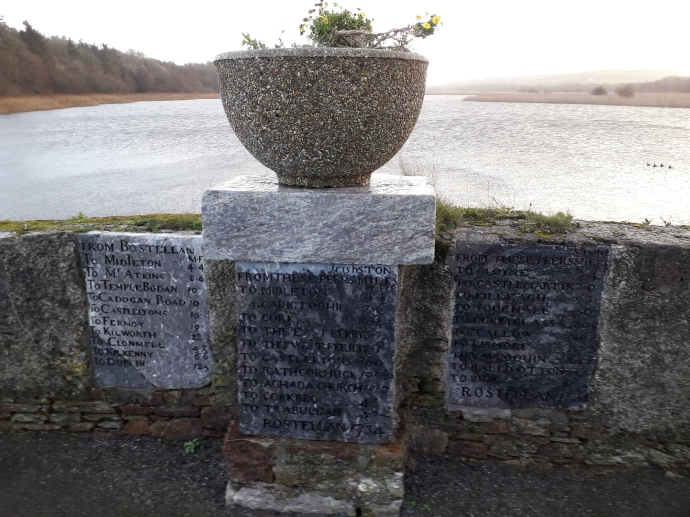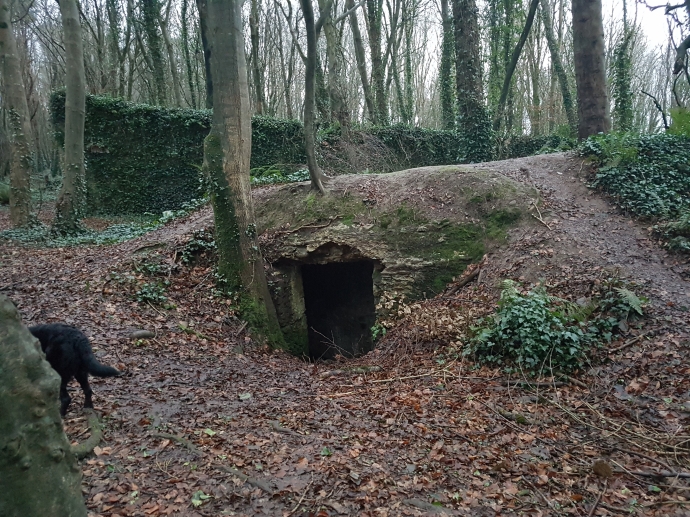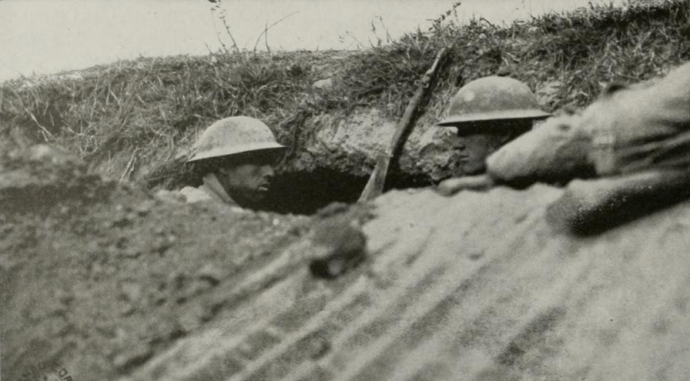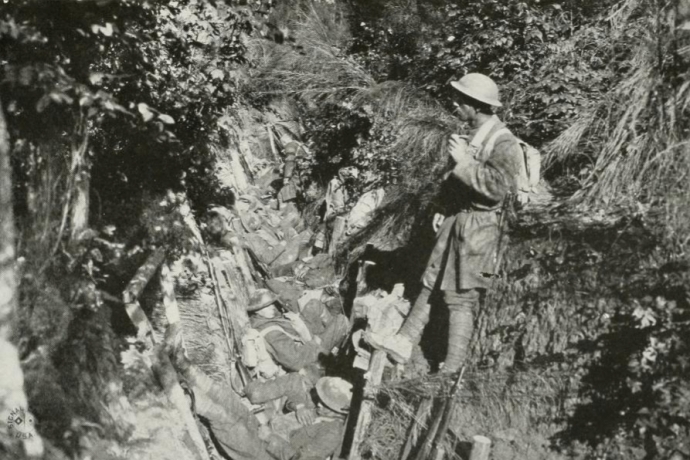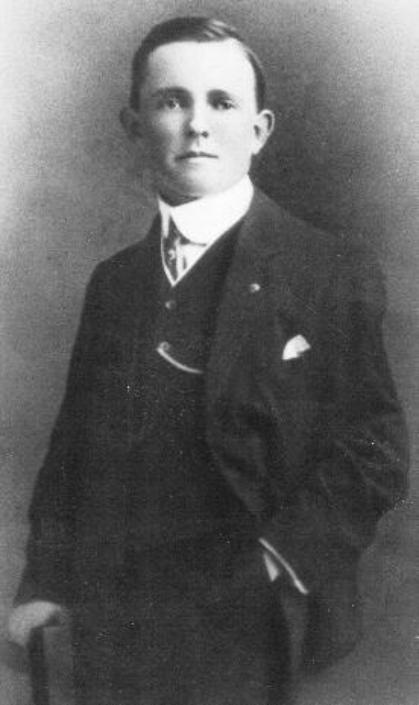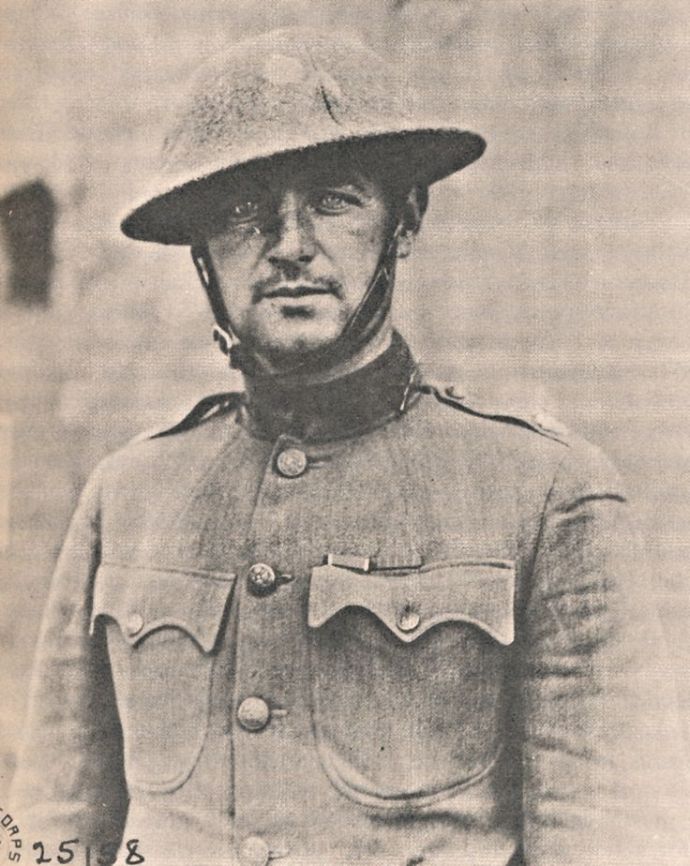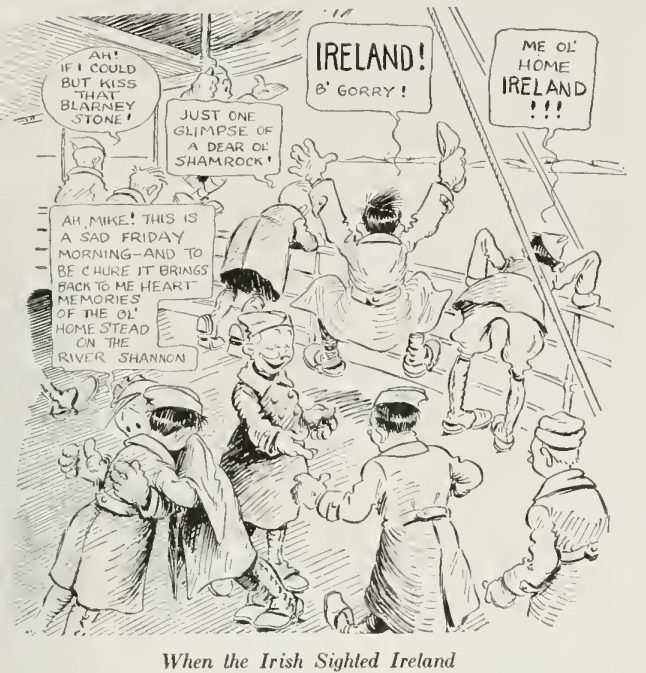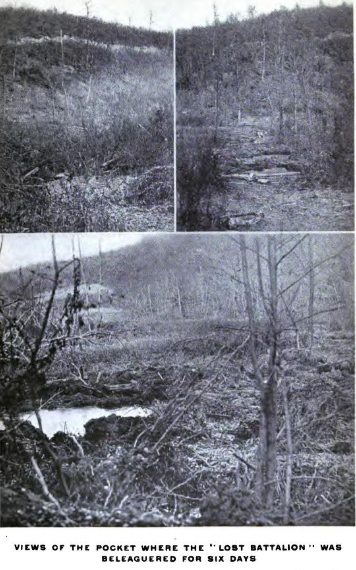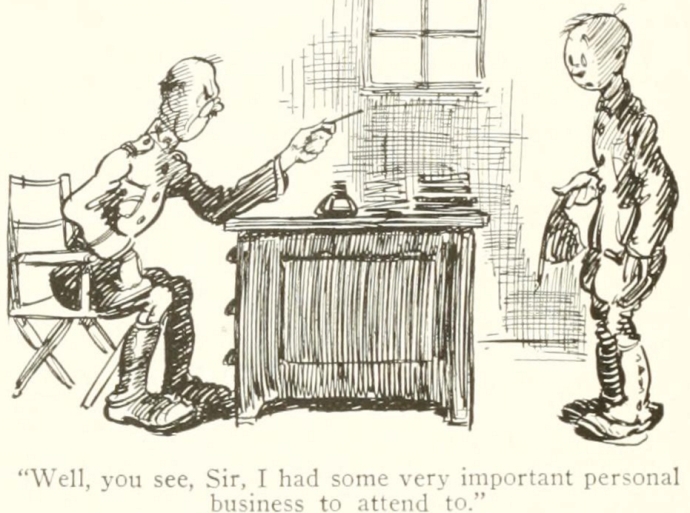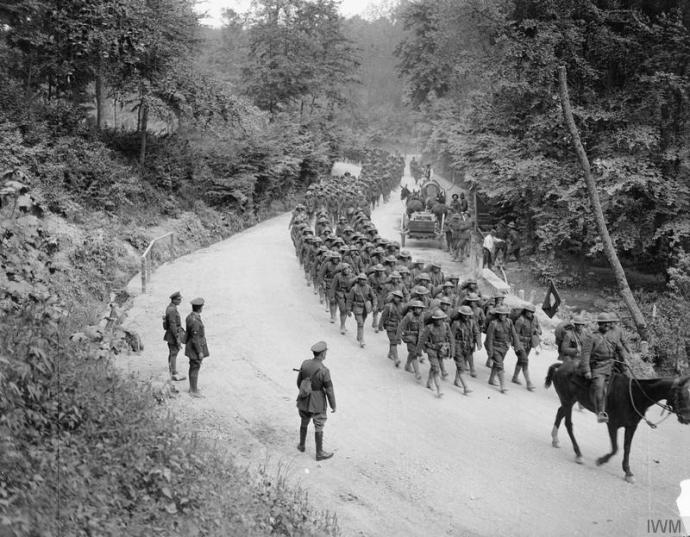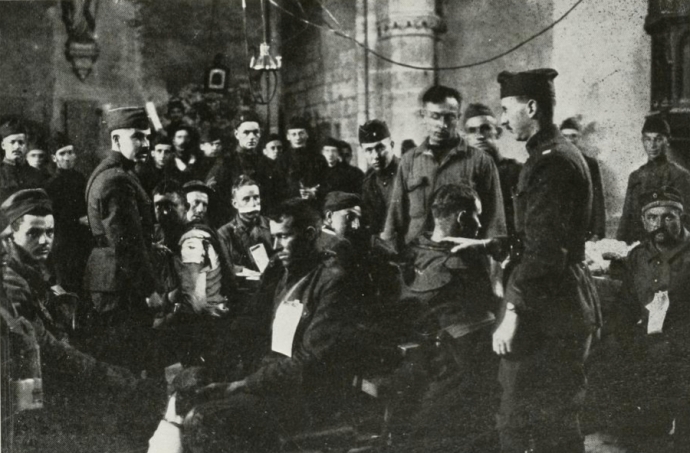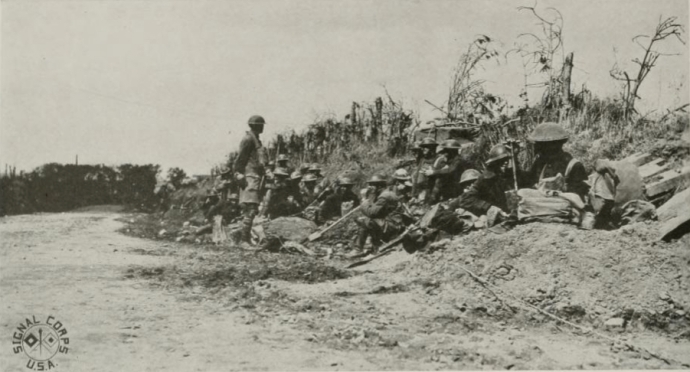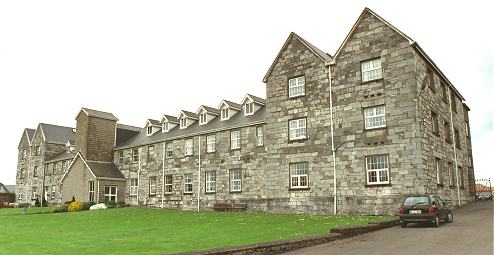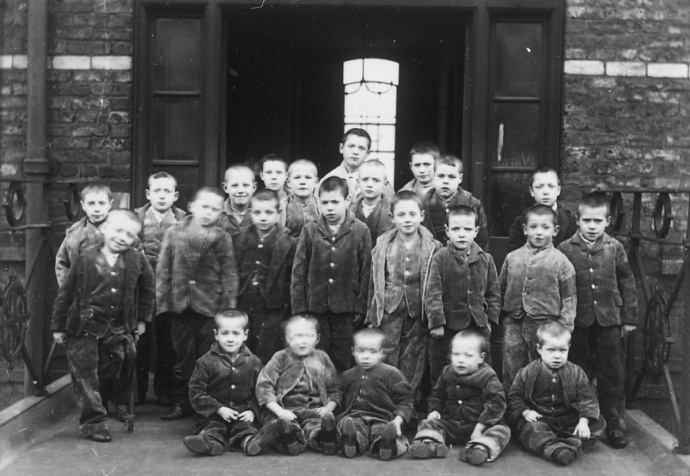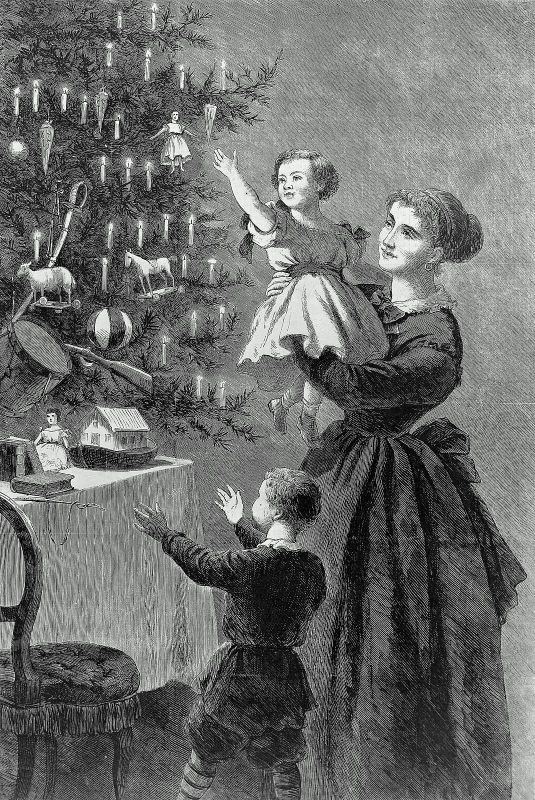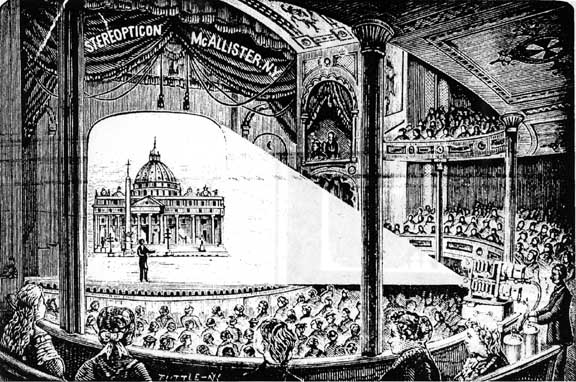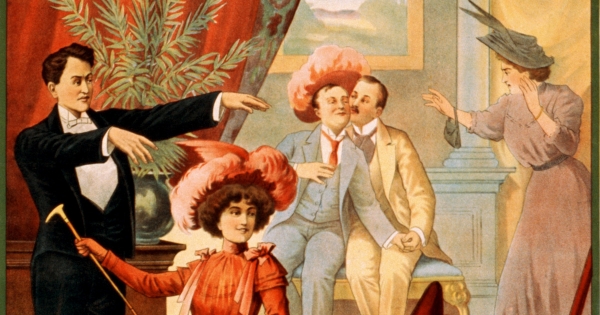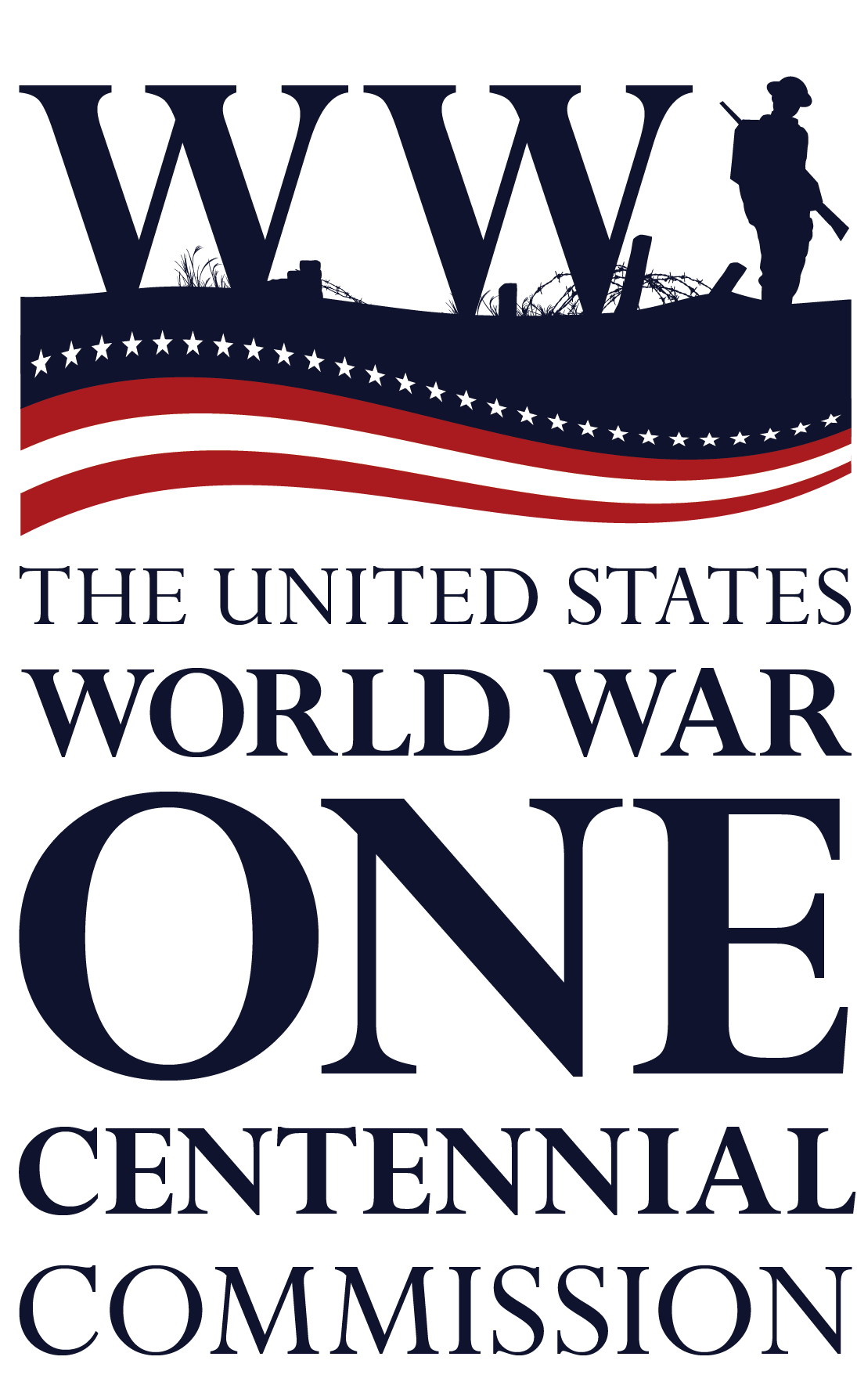| Name |
Place |
Rank |
Age |
Unit (Final) |
Overseas |
Killed |
Date |
Wounded |
Date |
| Ahearn, Cornelius F |
Cork |
Master Engineer |
31 |
HQ Detachment 5 Grand Division Transport Company |
Yes |
|
|
|
|
| Ahearn, Jerry Joseph |
Kinsale |
Private |
21 |
6 Company Engineers Fort Schuyler |
No |
|
|
|
|
| Ahern, William Joseph |
Midleton |
Lieutenant (J.G.) |
48 |
USS Hercules (lighter) |
N/A |
|
|
|
|
| Ahern, John J |
Cork |
Master Engineer |
38 |
HQ Company 701 Engineers |
Yes |
|
|
|
|
| Ahern, Cornelius |
Cork |
Cook |
32 |
12 Infantry |
No |
|
|
|
|
| Ahern, John |
Cork |
Private First Class |
28 |
Motor Transport Department Machine Gun School |
No |
|
|
|
|
| Ahern. William C |
Mallow |
Private |
24 |
Brooks F Flying Detachment Squadron A |
No |
|
|
|
|
| Ahern, Eugene F |
Cork |
Private First Class |
23 |
Base Hospital Camp Upton |
No |
|
|
|
|
| Aherne, Michael |
Whitegate |
Private First Class |
29 |
302 Ammunition Train |
Yes |
|
|
|
|
| Allen, Henry J |
Queenstown |
Sergeant |
26 |
3 Regiment Motor Mechanics |
Yes |
|
|
|
|
| Armstrong, Edward |
Cork |
Sergeant |
21 |
5 Track Mortar Battalion |
Yes |
|
|
|
|
| Bannon, William J |
Ballymore (Cork?) |
Private |
32 |
1 Replacement Depot |
Yes |
|
|
Severely |
28/07/18 |
| Barrett, Robert J |
Cork |
Musician |
31 |
HQ Company 106 Field Artillery |
Yes |
|
|
|
|
| Barrett, Michael T |
Cork |
Private |
30 |
Medical Detachment Camp Eustis |
No |
|
|
|
|
| Barrett, Patrick R |
Cork |
Wagoner |
28 |
Battery B 57 Artillery Coast Artillery Corps |
Yes |
|
|
Severely |
09/11/18 |
| Barrett, Cornelius J |
Cork |
Private |
24 |
L Company, 105 Infantry |
Yes |
|
|
Slightly |
20/10/18 |
| Barrow, David |
Mallow |
Private |
28 |
D Company, 501 Engineers |
Yes |
|
|
|
|
| Barrow, John |
Cork |
Sergeant |
21 |
M Company, 69th Infantry NYNG(165 Infantry) |
Yes |
|
|
Severely |
07/11/18 |
| Barry, Joseph C |
Queenstown |
Private First Class |
30 |
F Company, 163 Infantry |
Yes |
|
|
|
|
| Barry, Daniel |
Cork |
Private |
25 |
A Company, 109 Infantry |
Yes |
|
|
Severely |
11/11/18 |
| Barry, Daniel |
Cork |
Private |
24 |
B Company, 12 Infantry NYNG |
No |
|
|
|
|
| Barry, Richard |
Cork |
Private First Class |
22 |
7 Company, 2 Motor Mechanised |
Yes |
|
|
|
|
| Bennet, Michael |
Cork |
Master Engineer |
29 |
HQ, 301 Stevedore |
Yes |
|
|
|
|
| Bennning, Geoffrey J |
Youghal |
Corporal |
23 |
I Company, 52 Pioneer Infantry |
Yes |
|
|
|
|
| Blake, William |
Cork |
Bugler |
31 |
HQ Company, 1 infantry |
Yes |
|
|
|
|
| Bohan, Thomas |
Cork |
Private |
23 |
G Company, 165 Infantry (69 New York National Guard) |
Yes |
|
|
Slightly |
30/07/18 |
| Bohan, Peter J |
Cork |
Private |
23 |
G Company, 165 Infantry (69 New York National Guard) |
Yes |
|
|
Undetermined |
03/05/18 |
| Bowles, Richard J |
Cork |
Private |
21 |
A Battery, 42 Artillery Coast Artillery Corps |
Yes |
|
|
|
|
| Bradley, Dennis |
Cork |
Private |
43 |
C Company, 22 Infantry |
No |
|
|
|
|
| Bradley, Jeremiah |
Cork |
Private |
24 |
D Company, Ordinance Det, Aberdeen proving ground |
No |
|
|
|
|
| Brady, Joseph F |
Cork |
Cook |
23 |
M Company, 165 Infantry (69 New York National Guard) |
Yes |
|
|
Severely |
21/03/18 |
| Bray, John H |
Cork |
Corporal |
28 |
A Company, 16 Infantry |
Yes |
|
|
Slightly |
09/10/18 |
| Breen, David J |
Cork |
Private |
26 |
B Company, 504 Engineer Battalion |
Yes |
|
|
|
|
| Brennan, Patrick F |
Cork |
Sergeant |
41 |
A Company, 32 Infantry |
No |
|
|
|
|
| Brown, John F |
Cork |
Private |
39 |
O Company, 21 Engineers |
No |
|
|
|
|
| Brown, Vincent |
Cork |
Private |
20 |
D Company, 51 Pioneer Infantry |
Yes |
|
|
|
|
| Buckley, Patrick J |
Cork |
Corporal |
27 |
I Company, 9 Infantry |
Yes |
|
|
Slightly |
01/07/18 |
| Buckley, Daniel |
Cork |
Private First Class |
26 |
K Company, 69 Infantry NYNG (165 Infantry) |
Yes |
Yes |
17/10/18 |
Slightly |
21/03/18 |
| Buckley, John |
Cork |
Private First Class |
23 |
Machine Gun Company, 308 Infantry |
Yes |
|
|
|
|
| Buckley, John Timothy |
Cork |
Private First Class |
24 |
27 Company, MPC |
Yes |
|
|
|
|
| Burke, Thomas |
Cork |
Private First Class |
31 |
K Company, 324 Infantry |
Yes |
|
|
|
|
| Burke, James J |
Cork |
Private |
22 |
33 Field Artillery |
No |
|
|
|
|
| Burns, Andrew |
Cork |
Private First Class |
24 |
E Company, 307 Infantry |
Yes |
|
|
Slightly |
15/09/18 |
| Byrne, Cornelius |
Cork |
Corporal |
31 |
HQ Company, 3 Pioneer Infantry |
Yes |
|
|
|
|
| Byrne, Patrick J |
Cork |
Private |
29 |
69 New York National Guard |
Yes |
Yes |
26/07/18 |
Slightly |
22/03/18 |
| Callahan, John J |
Cork |
Private |
31 |
152 Depot Brigade |
No |
|
|
|
|
| Callahan, Michael P |
Cork |
Cook |
31 |
53 Depot Brigade |
No |
|
|
|
|
| Callahan, John F |
Cork |
Private First Class |
26 |
L Company, 28 Infantry |
Yes |
|
|
Slightly |
18/07/18 |
| Callahan, William |
Skibbereen |
Sergeant |
23 |
E Company, 307 Infantry |
Yes |
|
|
|
|
| Callan, William H |
Queenstown |
Private |
23 |
Aut Replacement Draft Fort Totten NY |
No |
|
|
|
|
| Canavan, David F |
Cork |
Wagoner |
29 |
Support Company, 42 Infantry |
No |
|
|
|
|
| Carey, Michael |
Cork |
|
21 |
USMC, Bks Det, Hingham Mass |
No |
|
|
|
|
| Carmody, Joseph Francis |
Cork |
Lieutenant (Temp) |
30 |
Duty Naval Ammunition Depot, Hingham Mass |
No |
|
|
|
|
| Carr, Patrick J |
Cork |
Private |
18 |
D Company, 304 Ammuntion Train |
Yes |
|
|
|
|
| Carroll, Michael J |
Cork |
Corporal |
29 |
152 Depot Brigade |
No |
|
|
|
|
| Carver, Patrick |
Cork |
Private |
28 |
C Battery, 315 Field Artillery |
15/04/18 |
|
|
|
|
| Casey, John Patrick |
Cork |
Sergeant |
49 |
USMC, Mare Island, CA |
No |
|
|
|
|
| Casey, Mathew |
Cork |
Private |
32 |
Ordinance Depot, Panama |
No |
|
|
|
|
| Casey, Mathew |
Cork |
Private |
33 |
B Company, 4 Infantry |
Yes |
|
|
Severely |
23/07/18 |
| Casey, Harry D |
Newmarket |
Private First Class |
26 |
331 Infantry |
Yes |
|
|
|
|
| Casey, Charles |
Cork |
Private |
26 |
160 Company, RTC |
Yes |
|
|
|
|
| Casey, Michael |
Cork |
Private |
25 |
HQ Company, 323 Infantry |
Yes |
|
|
|
|
| Casey, Joseph |
Cork |
Private First Class |
23 |
C Company, 130 Engineers |
Yes |
|
|
|
|
| Casey, Thomas |
Charleville |
Corporal |
21 |
B Company, 329 Battalion, 305 Tank Brigade |
Yes |
|
|
|
|
| Clancy, Michael |
Enaughter |
Corporal |
41 |
USMC, R.R. Quantico, VA |
No |
|
|
|
|
| Clark, Thomas J |
Cork |
Private |
25 |
G Company, 168 Infantry |
Yes |
|
|
Slightly |
12/09/18 |
| Clarke, Benjamin |
Bantry |
Private |
24 |
Motor Transport Company 741 |
No |
|
|
|
|
| Clifford, Richard P |
Queenstown |
Private |
29 |
G Company, 48 Infantry |
No |
|
|
|
|
| Coakley, Cornelius |
Cork |
Private |
27 |
C Company, 51 Pioneer Infantry |
Yes |
|
|
|
|
| Coakley, John J |
Cork |
Private First Class |
27 |
F Company, 323 Infantry |
Yes |
|
|
|
|
| Coakley, James Joseph |
Cork |
Corporal |
24 |
G Company, 52 Pioneer Infantry |
Yes |
|
|
|
|
| Coffey, William J |
Cork |
Private |
22 |
Medical Department Base Hospital 214 |
Yes |
|
|
|
|
| Collins, Daniel J |
Cork |
Private |
35 |
A Battery, 37 Artillery, Coastal Artillery Corps |
No |
|
|
|
|
| Collins, James |
Cork |
Wagoner |
26 |
HQ Company, 308 Infantry |
Yes |
|
|
|
|
| Collins, John J |
Cork |
2nd Lieutenant |
27 |
Camp Devens, Mass |
No |
|
|
|
|
| Collins, John J |
Cork |
Sergeant |
23 |
HQ COTS, Camp Pike, Ark, |
No |
|
|
|
|
| Collins, Patrick J |
Queenstown |
Private First Class |
27 |
F Battery, 309 Field Artillery |
Yes |
|
|
|
|
| Collins, John Joseph |
Cork |
Private |
26 |
G Company, Sec B Syracuse University Students Army Training Corps Syracuse |
No |
|
|
|
|
| Collins, Cornelius |
Queenstown |
Corporal |
24 |
G Company, 324 Infantry |
Yes |
|
|
|
|
| Comerford, John Patrick |
Cork |
Corporal |
24 |
A Company, 306 Infantry |
Yes |
|
|
Slightly |
24/08/18 |
| Condon, Jeremiah |
Queenstown |
Sergeant |
29 |
Med Storage Station, MD |
Yes |
|
|
|
|
| Connaughton, Michael Joseph |
Ballymore (Cork?) |
Corporal |
28 |
M Trk Co 464 M Sup Tn 417 |
Yes |
|
|
|
|
| Connors, James |
Cork |
Sergeant |
46 |
Ordinance Corps |
Yes |
|
|
|
|
| Conway, Maurice |
Millstreet |
Private |
23 |
L Company, 303 Infantry |
Yes |
|
|
|
|
| Corcoran, Patrick J |
Cork |
Sergeant |
40 |
Military Police, Company 1 |
Yes |
|
|
|
|
| Costello, Peter Matthew |
Bantry |
Sup Sergeant |
27 |
M Company, 52 Pioneer Infantry |
Yes |
|
|
|
|
| Cotter, Garrett T |
Cork |
Private First Class |
32 |
10 Company, 20 Engineers |
Yes |
|
|
|
|
| Coughlan, Cornelius |
Schull |
Private |
29 |
L Company, 328 Infantry |
Yes |
|
|
|
|
| Coughlin, Edward |
Cork |
Private |
29 |
H Company, 303 Infantry |
Yes |
|
|
|
|
| Coughlin, Timothy |
Cork |
Private |
30 |
21 Company, Machine Gun Division, Machine Gun Training Center |
No |
|
|
|
|
| Cowhig, Daniel |
Cork |
Private |
29 |
M Company, 2 Pioneer Infantry |
Yes |
|
|
|
|
| Cronin, Thomas J |
Cork |
Private |
25 |
Depot Regiment 304, |
No |
|
|
|
|
| Cronin, William Edward |
Cork |
Private |
22 |
B Company, 310 Infantry |
Yes |
|
|
Slightly |
26/09/18 |
| Croston, Jobe |
Cork |
Private |
22 |
B Battery, 43 Artillery CAC |
Yes |
|
|
|
|
| Crowley, John J |
Cork |
Corporal |
29 |
Chemical Warfare Service Camp, Kendrick NJ |
No |
|
|
|
|
| Crowley, Timothy John |
Dunmanway |
Segeant |
27 |
C Company, 306 Infantry |
Yes |
Yes |
20/08/18 |
|
|
| Crowley, Patrick J |
Cork |
Private First Class |
27 |
G Company, 311 Infantry |
Yes |
|
|
|
|
| Crowley, Stephen |
Cork |
Private First Class |
22 |
B Company, 302 Engineers |
Yes |
|
|
|
|
| Curran, Owen |
Newmarket |
Sergeant |
27 |
E Company, 302 Ammunition Train |
Yes |
|
|
|
|
| Curtin, Denis D |
Rockchapel |
Sergeant |
23 |
HQ Company, 44 Artillery CAC |
Yes |
|
|
|
|
| Cusack, Thomas |
Cork |
Private |
27 |
33 Prisoner of war Esctort Company |
Yes |
|
|
|
|
| Daly, John J |
Cork |
Private |
41 |
F Company, 104 Infantry |
Yes |
|
|
|
|
| Daly, Patrick |
Cork |
Private First Class |
31 |
C Company, 318 Machine Gun Battalion |
Yes |
|
|
|
|
| Daly, Thomas |
Cork |
Private |
30 |
152 Depot Brigade |
No |
|
|
|
|
| Daly, Timothy |
Cork |
Wagoner |
29 |
Support Company, 303 Infantry |
Yes |
|
|
|
|
| Daly, Edward M |
Newmarket |
Private |
27 |
A Company, 305 Machine Gun Battallion |
Yes |
|
|
|
|
| Daly, John |
Cork |
Sergeant |
23 |
D Company, 69 Infantry NYNG (165 Infantry) |
Yes |
|
|
|
|
| Daly, John J |
Schull |
Corporal |
27 |
Quartermaster Corps |
No |
|
|
|
|
| Daly, Thomas |
Cork |
Private |
24 |
299 Aer Provisional Service Squadron |
No |
|
|
|
|
| Daly, Thomas S |
Cork |
Private First Class |
23 |
279 Aer Squadron ASSC |
Yes |
|
|
|
|
| Daly, Arthur J |
Cork |
Corporal |
22 |
330 Infantry |
Yes |
|
|
|
|
| Daly, Nicholas A |
Cork |
Sergeant |
25 |
RTC Receiving depot MG training center Camp Hancock |
No |
|
|
|
|
| Davis, William B |
Queenstown |
Wagoner |
23 |
C Battery, 309 Field Artillery |
Yes |
|
|
|
|
| Deasy, John M |
Cork |
Private |
28 |
A Company, 306 Engineers |
No |
|
|
|
|
| Desmond, Daniel |
Cork |
Private |
29 |
B Company, 51 Pioneer Infantry |
Yes |
|
|
|
|
| Dillon, Jerome |
Schull |
Private |
30 |
D Company, 11 Machine Gun Battalion, |
Yes |
|
|
|
|
| Dilworth, Daniel |
Cork |
Corporal |
28 |
L Company, 306 Infantry |
Yes |
|
|
Slightly |
14/10/18 |
| Dinan, Bartholomew J |
Cork |
Private |
28 |
C Company, 69 Infantry NY National Guard |
No |
|
|
|
|
| Dineen, John |
Cork |
Private First Class |
28 |
MD Base Hospital 135 |
No |
|
|
|
|
| Doherty, Daniel D |
Rathmore |
Private |
27 |
Provost Guard Company, Camp Hancock GA |
No |
|
|
|
|
| Donegan, James J |
Cork |
Private First Class |
26 |
Ordinance Casual Company 67 |
Yes |
|
|
|
|
| Donnellan, Thomas |
West Cork |
Private |
27 |
MD |
No |
|
|
|
|
| Donoghue, Daniel J |
Riverstick |
Private |
28 |
L Company, 346 Infantry |
Yes |
|
|
|
|
| Donovan, Denis |
Cork |
Private First Class |
30 |
A Company, 69 Infantry NYNG(165 Infantry) |
Yes |
Yes |
29/07/18 |
|
|
| Donovan, Denis J |
Cork |
Sergeant |
26 |
M Company, 69th Infantry NYNG(165 Infantry) |
Yes |
|
|
Slightly |
22/03/18 |
| Donovan, James |
Kinsale |
Private |
30 |
G Company, 52 Pioneer Infantry |
Yes |
|
|
|
|
| Donovan, Joseph D |
Cork |
Private First Class |
29 |
Camp Utilities Det QMC Camp Upton, NY |
No |
|
|
|
|
| Donovan, Michael |
Bauravilla |
Private |
29 |
4 Co CAC Ft Warren Mass |
No |
|
|
|
|
| Donovan, Charles |
Cork |
Private First Class |
28 |
A Company, 312 Machine Gun Battalion |
Yes |
|
|
|
|
| Donovan, Cornelius |
Cork |
Private |
29 |
E Battery, 30 Artillery CAC |
No |
|
|
|
|
| Donovan, Jeremiah |
Cork |
Private |
26 |
D Battery, 306 Field Artillery |
Yes |
|
|
|
|
| Donovan, Jeremiah J |
Cork |
Sergeant |
26 |
825 Aero Squadron |
Yes |
|
|
|
|
| Donovan, John Joseph |
Bantry |
Private |
26 |
M Company, 348 Infantry |
Yes |
|
|
|
|
| Donovan, John V |
Cork |
Corporal |
25 |
COTS Camp Lee, VA |
No |
|
|
|
|
| Donovan, Henry J |
Skibbereen |
Private |
24 |
HQ Company, 348 Infantry |
Yes |
|
|
|
|
| Donovan, Michael |
Skibbereen |
Private First Class |
22 |
C Company, 59 Pioneer Infantry |
Yes |
|
|
|
|
| Donovan, Michael P |
Cork |
Private |
19 |
G Troop, 12 Cavalry |
No |
|
|
|
|
| Dowling, Hugh |
Cork |
Private |
26 |
Vet Hospital # 13 |
Yes |
|
|
|
|
| Driscoll, John |
Queenstown |
Bosun (Prov) |
55 |
Mine Sweeping Division, Tompkinsville S.I., NY |
N/A |
|
|
|
|
| Driscoll, Michael P |
Cork |
Private First Class |
30 |
Sup Company, 305 Infantry |
Yes |
|
|
|
|
| Driscoll, Denis J |
Bantry |
Sergeant |
28 |
Quartermaster Corps, Fort Slocum, NY. |
No |
|
|
|
|
| Driscoll, John J |
Cork |
Private |
27 |
340 Motorised Truck Company |
No |
|
|
|
|
| Driscoll, Jerry |
Cork |
Private |
25 |
Quartermast Corps, Service Company 3, Camp Johnston, FL |
No |
|
|
|
|
| Driscoll, Dennis |
Cork |
Sergeant |
24 |
TC at large AEF |
Yes |
|
|
|
|
| Driscoll, William |
Cork |
Private |
23 |
I Company, 307 Infantry. |
Yes |
Yes |
09/09/18 |
|
|
| Driscoll, James |
Kinsale |
Corporal |
22 |
E Company, 307 Engineer |
Yes |
|
|
|
|
| Drislane, Kennis, J |
Fermoy |
Mechanic |
25 |
B Battery, 15 Field Artillery, |
Yes |
|
|
|
|
| Duffy, James |
Cork |
Chief Water Tender |
41 |
Headquarters, 3rd Naval District |
N/A |
|
|
|
|
| Dwyer, Neil Patrick |
Cork |
Corporal |
46 |
USMC, Ft. Lafayette NY |
No |
|
|
|
|
| Dwyer, Robert |
Bantry |
Private First Class |
24 |
Machine Gun Company, 308 Infantry |
Yes |
|
|
|
|
| Dwyer, Jeremiah |
Cork |
Private |
22 |
11 Company Nov Aut Repl Draft, Camp Wheeler, GA |
No |
|
|
|
|
| Dynan, William G |
Cork |
Sergeant |
26 |
I Company 69 Infantry NYNG (165 Infantry) |
Yes |
|
|
Slightly |
14/10/18 |
| Evans, Daniel |
Cork |
Sergeant |
26 |
C Company 307 F Signal Battalion, |
Yes |
|
|
|
|
| Farley, Patrick Stephen |
Cork |
Lieutenant (J.G.) |
50 |
(USN), Det. HELUNTA to receiving ship, Norfolk VA. |
N/A |
|
|
|
|
| Feore, James |
Cork |
Private |
25 |
D Company, 306 Infantry, |
Yes |
|
|
|
|
| Fitzgerald, Thomas D |
Cork |
Private |
28 |
A Company, 56 Machine Gun Battalion |
No |
|
|
|
|
| Fitzgibbon, Michael |
Cork |
Corporal |
27 |
C Company, 310 Infantry |
Yes |
Yes |
19/09/18 |
|
|
| Fitzgibbon, John |
Fermoy |
Private First Class |
22 |
HQ Company, 305 Infantry |
yes |
|
|
|
|
| Fitzpatrick, William |
Cork |
HS Mechanic |
27 |
E Battery, 80 Field Artillery |
Yes |
|
|
|
|
| Fitzpatrick, Dennis |
Millstreet |
Private First Class |
26 |
77 Military Police Company |
Yes |
|
|
|
|
| Flynn, Daniel J |
Cork |
Private First Class |
29 |
H Company, 310 Infantry |
Yes |
|
|
|
|
| Foley, William |
Youghal |
Private |
28 |
C Company, 9 Battalion US Gds |
No |
|
|
|
|
| Foley, Bartholomew |
Cork |
Private |
21 |
E Company, 11 Engineers |
Yes |
|
|
|
|
| Ford, Denis |
Cork |
Private |
21 |
15 Company, Coast Artillery Corps |
No |
|
|
|
|
| Ford, Daniel |
Cork |
Private First Class |
19 |
I Company, 69 Infantry NYNG (165 Infantry) |
Yes |
|
|
Severely |
28/07/18 |
| Forde, Michael J |
Cork |
Sergeant |
31 |
Brd Sup Det Raritan Arsenal NJ |
Yes |
|
|
|
|
| Galvin, Denis D |
Cork |
Private |
24 |
H Company, 26 Infantry |
Yes |
|
|
Severely |
05/10/18 |
| Geaney, William V |
Cork |
Private |
25 |
2 Ordinance Company, 2 Co Ord Repair shop |
Yes |
|
|
|
|
| Godson, John J |
Cork |
Private |
30 |
B Company, 303 Infantry. MD to discharge |
Yes |
|
|
|
|
| Goggin, Frank J |
Cork |
Private |
29 |
Machine Gun training center, Camp Hancock, GA |
No |
|
|
|
|
| Goggin, Cornelius |
Cork |
Private |
27 |
C Company, 2 Pioneer Infantry |
Yes |
|
|
|
|
| Gould, Denis |
Cork |
Private First Class |
24 |
E Company, 2 Pioneer Infantry |
Yes |
|
|
|
|
| Goulding, John J |
Cork |
Private |
27 |
C Battery, 31 Field Artillery |
No |
|
|
|
|
| Gregory, Michael J |
Cork |
Corporal |
33 |
L Company, 37 Infantry |
No |
|
|
|
|
| Griffin, Michael |
Cork |
Private First Class |
32 |
Ordinance Depot, 117 Ordinance repair Shop |
Yes |
|
|
|
|
| Griffin, John A |
Cork |
Private |
22 |
C Company, 16 Engineers, |
Yes |
|
|
|
|
| Griffin, Gerald J |
Cork |
Bn Sergeant Major |
18 |
HQ Company, 52 Pioneer Infantry |
Yes |
|
|
|
|
| Hagerty, John |
Cork |
Private |
30 |
H Company, 164 Infantry |
Yes |
|
|
|
|
| Hagerty, Timothy H |
Cork |
Private |
28 |
Camp Wheeler, GA. Nv Aut Repl Draft |
No |
|
|
|
|
| Halliday, Robert |
Ballymore (Cork?) |
Chauffeur |
23 |
HQ Detachment, 102 Field Signal Battalion |
Yes |
|
|
|
|
| Halpin, John |
Cork |
Sergeant |
22 |
M Company, 12 Infantry NYNG (52 Pioneer ) |
Yes |
|
|
|
|
| Harrigan, Jeremiah |
Cork |
Saddler |
38 |
B Battery, 104 Field Artillery |
Yes |
|
|
|
|
| Harrington, James J |
Adrigole |
Private First Class |
29 |
L Company, 307 Infantry |
Yes |
|
|
Slightly |
23/08/18 |
| Harrington, Jeremiah |
Cork |
Private First Class |
29 |
H Company, 326 Infantry |
Yes |
|
|
Slightly |
11/10/18 |
| Harrington, Peter J |
Cork |
Private |
30 |
G Company, 58 Infantry |
Yes |
|
|
Slightly |
04/10/18 |
| Hart, Maurice |
Cork |
Private |
33 |
L Company, 69 Infantry NYNG (165 Infantry) |
Yes |
|
|
Slightly |
28/07/18 |
| Hart, Thomas H |
Garryduff |
Private First Class |
23 |
M Company, 67 Infantry |
No |
|
|
|
|
| Hartnett, Jerry |
Cullen |
Private |
31 |
5 Company, Coast Artillery Corps, Portland Ft William ME |
No |
|
|
|
|
| Hartnett, James |
Cork |
Private |
29 |
74 NY Infantry NG |
No |
|
|
|
|
| Hartnett, Thomas C |
Cork |
Private |
24 |
E Battery 2 Field Artillery NYNG (105 Field Artillery) |
Yes |
|
|
Slightly |
06/11/18 |
| Harty, John |
Cork |
Private |
30 |
156 Company, C Def of NH, Ft. Constitution |
No |
|
|
|
|
| Hawkins, Thomas P |
Cork |
Private |
23 |
C Battery, 305 Field Artillery |
Yes |
|
|
|
|
| Hayes, Patrick B |
Cork |
Sergeant |
36 |
M Company 69 Infantry NYNG (165 Infantry) |
Yes |
|
|
Slightly |
22/03/18 |
| Healy, Lawrence J |
Cork |
Corporal |
22 |
B Battery, 309 Field Artillery |
Yes |
|
|
|
|
| Heany, Patrick J |
Cork |
First Sergeant |
25 |
D Company, 69 Infantry NYNG (165 Infantry) |
Yes |
|
|
Degree Undetermined |
30/07/18 |
| Hickey, Andrew |
Cork |
Private First Class |
33 |
F Company, 21 Engineers |
Yes |
|
|
|
|
| Higgins, Denis |
Queenstown |
Corporal |
32 |
6 Provisional Ordinance Depot, Camp Stanley, TX |
No |
|
|
|
|
| Hill, Thomas P |
Cork |
Private First Class |
29 |
C Company, 302 Field Signal Battalion |
Yes |
|
|
|
|
| Holland, Michael |
Bantry |
Sergeant |
31 |
Depot Quartermaster, Camp Hancock, GA |
No |
|
|
|
|
| Holland, Patrick |
Cork |
Corporal |
24 |
92 Motor Transport Company, Motor Transport Corps |
Yes |
|
|
|
|
| Horan, Peter |
Cork |
First Sergeant |
26 |
G Company, 69 Infantry |
No |
|
|
|
|
| Horgan, Cornelius |
Cork |
Corporal |
28 |
I Company, 69 Infantry NYNG (165 Infantry) |
Yes |
|
|
Slightly |
14/10/18 |
| Hosford, John W A |
Cork |
Private First Class |
24 |
HQ Company, 15 Field Artillery, QMC to discharge |
Yes |
|
|
|
|
| Hourihan, John J |
Cork |
Private |
30 |
B Company, 9 Machine Gun Battalion |
Yes |
Yes |
12/10/18 |
|
|
| Howard, James |
Cork |
Private |
30 |
K Company, 307 Infantry, |
Yes |
|
|
Severely |
14/09/18 |
| Humphries, James |
Cork |
Private |
30 |
A Company, 51 Pioneer Infantry |
Yes |
|
|
|
|
| Hurley, Daniel |
Cork |
Corporal |
28 |
C Battery, 38 Artillary, Coast Artillery Corps |
No |
|
|
|
|
| Hurley, Jeremiah |
Cork |
Private First Class |
26 |
F Company, 308 Infantry, |
Yes |
|
|
Slightly |
30/09/18 |
| Hurley, Jerome Bernard |
Cork |
Private |
24 |
A Company, 302 Engineers |
Yes |
|
|
|
|
| Hurley, Richard |
Cork |
Private |
24 |
H Company, 305 Infantry |
No |
|
|
|
|
| Johnson, James H |
Cork |
Reg Sergeant Major |
45 |
HQ Company, 7 Infantry |
Yes |
|
|
Slightly |
04/10/18 |
| Johnston, George William |
Cork |
Lieutenant (J.G.) |
27 |
Naval School, Columbia University, USN |
N/A |
|
|
|
|
| Jordan, Eugene |
Cork |
Private First Class |
24 |
HQ Company, 347 Infantry |
Yes |
|
|
|
|
| Kane, Lawrence J |
Cork |
Private First Class |
29 |
MD General Hospital 14 Ft. Oglethorpe |
No |
|
|
|
|
| Keane, Thomas L |
Cork |
Private |
23 |
H Company, 108 Infantry |
Yes |
|
|
Slightly |
29/09/18 |
| Kearney, Michael |
Newmarket |
Captain |
43 |
Jd. Mare Island CA. |
No |
|
|
|
|
| Keating, Daniel |
Cork |
Corporal |
30 |
Ordinance C, Aberdeen Proving Ground, MD |
No |
|
|
|
|
| Keefe, John J |
Cork |
Private |
40 |
A Company, 215 Engineers |
No |
|
|
|
|
| Keleher, Dennis |
Cork |
Sergeant |
37 |
School for bakers & Cooks, Camp Dix, NJ |
Yes |
|
|
|
|
| Kelleher, Michael |
Cork |
Sergeant |
28 |
K Company, 305 Infantry, |
Yes |
Yes |
05/10/18 |
|
|
| Kelleher, Cornelius |
Macroom |
Private |
27 |
E Company, 51 Pioneer Infantry |
Yes |
|
|
|
|
| Kelleher, Michael |
Cork |
Private |
27 |
MD to discharge |
No |
|
|
|
|
| Kelleher, Patrick |
Cork |
Private |
27 |
G Company, 328 Infantry |
Yes |
|
|
|
|
| Kelleher, Cornelius |
Cork |
Private |
27 |
F Company, 355 Infantry |
Yes |
|
|
|
|
| Kelly, James |
Youghal |
Corporal |
29 |
C Company, 305 Machine Gun Battalion |
Yes |
|
|
Degree Undetermined |
07/09/18 |
| Kelly, John J |
Cork |
Private |
27 |
G Company, 166 Infantry |
Yes |
|
|
Slightly |
13/09/18 |
| Kennedy, Joseph H |
Cork |
Private First Class |
30 |
B Company, 33 Engineers |
Yes |
|
|
|
|
| Kennedy, Edward Thomas |
Cork |
Private |
23 |
A Company, 316 Machine Gun Battalion |
Yes |
|
|
|
|
| Kennedy, William V |
Cork |
Private |
21 |
E Company, 308 Infantry |
Yes |
|
|
Degree Undetermined |
14/08/18 |
| Keohane, Denis |
Bantry |
Private First Class |
26 |
Machine Gun training center, Camp Hancock, GA |
No |
|
|
|
|
| Keohane, Jeremiah |
Bantry |
Private |
24 |
3 Company, 25 Ordinance supply |
No |
|
|
|
|
| Keyes, John Michael |
Cork |
Captain |
42 |
Camp Dix, NJ |
Yes |
|
|
|
|
| Kiely, Michael Anthony |
Cork |
Lieutenant |
30 |
461 Aer Squadron, |
No |
|
|
|
|
| Kingston, William |
Ballydehob |
Private |
29 |
F Company, 25 Engineers |
Yes |
|
|
|
|
| Kingston, George S |
Drimoleague |
Private |
25 |
A Battery, 304 Field Artillery |
Yes |
|
|
|
|
| Kinkead, Thomas M |
Cork |
Private |
31 |
C Company, 105 Infantry |
Yes |
|
|
Severely |
29/09/18 |
| Kinnery, William A |
Cork |
Private First Class |
29 |
D Company, 5 Machine Gun Battalion |
Yes |
|
|
|
|
| Landers, Robert F |
Cork |
Private |
29 |
G Company, 45 Infantry |
No |
|
|
|
|
| Landy, Albert |
Cork |
Private |
27 |
D Company, 501 Engineers |
Yes |
|
|
|
|
| Leahy, William |
Cork |
Private |
29 |
224 Aero Squadron, |
Yes |
|
|
|
|
| Leary, Cornelius D |
Cork |
Private |
29 |
A Company, 309 Infantry |
No |
|
|
|
|
| Leary, Timothy |
Cork |
Private First Class |
29 |
B Company, 307 Infantry |
Yes |
|
|
Severely |
28/08/18 |
| Lenihan, Patrick |
Cork |
Cook |
25 |
B Company, 163 Infantry/POW escort to discharge |
Yes |
|
|
|
|
| Long, Edward D |
Cork |
Private |
27 |
Construction Co 9 Kelly F Tex |
Yes |
|
|
|
|
| Looney, James |
Cork |
Private |
27 |
Engineers C Camp Humphreys, VA |
No |
|
|
|
|
| Looney, John J |
Cork |
Corporal |
27 |
Med Det 9 Inf to discharge |
Yes |
|
|
Severely |
01/06/18 |
| Lucey, John J |
Kanturk |
Sergeant |
23 |
MD 305 Infantry |
Yes |
|
|
Severely |
07/11/18 |
| Lucey, William |
Queenstown |
Ensign |
22 |
Naval Auxilliary Reserve, NY/N.O.T.S. Baltimore |
N/A |
|
|
|
|
| Lynch, Jerome Mosley |
Cork |
Lt. Commander |
47 |
Naval Hospital NY “America” |
N/A |
|
|
|
|
| Lynch, James J |
Cork |
Sergeant |
39 |
HQ Company, 69 Infantry NYNG (165 Infantry) |
Yes |
|
|
|
|
| Lynch, James |
Youghal |
Private |
26 |
Machine Gun Company, 308 Infantry |
Yes |
Yes |
07/10/18 |
|
|
| Lynch, Jeremiah S. |
Cork |
Private |
26 |
B Battery, 305 Field Artillery, |
Yes |
|
|
|
|
| Lynch, John |
Bantry |
Private |
26 |
H Company, 115 Infantry |
Yes |
Yes |
18/09/18 |
|
|
| Lynch, Michael |
Cork |
Private First Class |
25 |
D Company, 305 Infantry |
Yes |
|
|
Slightly |
16/08/18 |
| Lyons, Daniel Bartholmon |
Cork |
Private First Class |
30 |
B Company, 347 Infantry |
Yes |
|
|
|
|
| Madden, Stephen J |
Cork |
Private |
34 |
Repl Engineers, Ft. Foote, MD |
Yes |
|
|
|
|
| Magner, Michael J |
Cork |
Sergeant |
28 |
MD Post Hospital, Madison Barracks, NY |
No |
|
|
|
|
| Magner, William J |
Cork |
Corporal |
26 |
Support Company 332 Camp Merritt, NJ |
No |
|
|
|
|
| Mahony, Michael |
Cork |
Sergeant |
54 |
B Company, 443 Reserve Labor Battalion |
No |
|
|
|
|
| Mahony, James J |
Cork |
Private First Class |
31 |
D Company, 38 Infantry |
Yes |
|
|
|
|
| Mahony, Stephen |
Cork |
Private First Class |
25 |
Base Hospital #85 |
Yes |
|
|
|
|
| Mahony, Patrick |
Cork |
Private |
25 |
B Company, 147 Machine Gun Battalion |
Yes |
Yes |
02/11/18 |
|
|
| Mahony, Michael J |
Cork |
Sergeant Mechanic |
21 |
Quartermaster Corps Camp Greene, NC |
No |
|
|
|
|
| Maloney, Dan(iel) |
Cork |
Cook |
21 |
B Company, 10 Infantry NYNG (51 Pioneer Infantry) |
Yes |
|
|
|
|
| Marks, James Christopher Jr. |
Cork |
1st Lietenant |
28 |
Infantry ASP |
No |
|
|
|
|
| Mason, Harry |
Cork |
Private First Class |
30 |
D Company, 38 Infantry |
Yes |
|
|
|
|
| Massey, Arthur B |
Cork |
Private |
32 |
157 Depot Brigade |
No |
|
|
|
|
| Maume, Gerald V |
Cork |
Private First Class |
30 |
C Company, 345 Infantry, |
Yes |
|
|
|
|
| McAuliffe, Julia |
Cork |
Nurse |
44 |
Post Hospital, Belgium, Camp Devens, Mass |
Yes |
|
|
|
|
| McAuliff, Cornelius J |
Cork |
Sergeant |
30 |
General Hospital # 8, |
No |
|
|
|
|
| McAuliffe, Michael J |
Cork |
Sergeant |
30 |
D Company, 69 Infantry NYNG (165 Infantry) |
Yes |
|
|
Slightly |
15/10/18 |
| McAuliffe, Denis |
Cork |
Corporal |
26 |
D Company, 69 Infantry NYNG (165 Infantry) |
Yes |
|
|
Severely |
14/10/18 |
| McCarthy, Lawrence |
Clonakilty? |
Wagoner |
21 |
MD F Hospital, 305 302 Sn Tn |
Yes |
|
|
|
|
| McCarthy, William |
Cork |
Private |
31 |
K Company, 348 Infantry |
Yes |
|
|
|
|
| McCarthy, Denis |
Cork |
Sergeant |
25 |
M Company, 69th Infantry NYNG(165 Infantry) |
Yes |
|
|
Twice, Slightly and Severely, |
30/07/18 |
| McCarthy, Michael J |
Skibbereen |
Private First Class |
29 |
B Company, 321 Machine Gun Battalion |
Yes |
|
|
Slightly |
16/10/18 |
| McCarthy, Patrick |
Skibbereen? |
Private First Class |
29 |
I Company, 306 Infantry |
Yes |
|
|
|
|
| McCarthy, William |
Cork |
Private First Class |
29 |
231 MPC |
Yes |
|
|
|
|
| McCarthy, Edmond Finbar |
Cork |
2nd Lieutenant |
29 |
1 Replacement Depot, |
Yes |
|
|
|
|
| McCarthy, Frank |
Cork |
Private |
28 |
M Company, 141 Infantry |
Yes |
|
|
Gassed severely |
07/10/18 |
| McCarthy, William |
Cork |
Private First Class |
25 |
162 Dep Brigade |
No |
|
|
|
|
| McCarthy, Eugene J |
Cork |
Corporal |
27 |
MD |
No |
|
|
|
|
| McCarthy, Alexander J |
Cork |
Private First Class |
24 |
C Battery, 306 Field Artillery |
Yes |
|
|
|
|
| McCarthy, Eugene |
Cork |
Sergeant |
24 |
A Company, 3 Infantry |
No |
|
|
|
|
| McCarthy, Bartholomew |
Cork |
Corporal |
24 |
152 Depot Brigade |
No |
|
|
|
|
| McCarthy, Harry |
Cork |
Private |
34 |
E Company, 42 Infantry |
No |
|
|
|
|
| McCarthy, Patrick J |
Cork |
Cook |
21 |
L Company, 69 Infantry NYNG (165 Infantry) |
Yes |
|
|
|
|
| McDermott, Michael F |
Cork |
Sergeant |
29 |
HQ Det Army Service Corps A PO 117 |
Yes |
|
|
|
|
| McDonald, Michael |
Youghal |
Private First Class |
22 |
F Company, 108 Infantry |
Yes |
|
|
Slightly |
29/09/18 |
| McGillicuddy, John |
Cork |
Private |
22 |
E Company, 69 Infantry NYNG |
No |
|
|
|
|
| McNamara, Bart |
Cork |
Corporal |
29 |
F Battery, Field Artillery, NYNG (104 Field Artillery) |
Yes |
|
|
|
|
| McNamara, John Finbar |
Queenstown |
Lietenant (J.G.) |
27 |
Naval Overseas Transportation Service NY “America” |
N/A |
|
|
|
|
| McSweeney, Myles J |
Cork |
Private First Class |
31 |
47 Artillery, Coast Artillery Corps, |
No |
|
|
|
|
| McSweeney, Jeremiah W |
Bantry |
Private |
27 |
HQ Company, 127 Field Artillery, |
Yes |
|
|
|
|
| Mills, George |
Glanmire |
Private |
29 |
AS Mechanic School Det, St. Paul, Minn. |
No |
|
|
|
|
| Monahan, John J |
Cork |
Boatswain |
44 |
On duty Armed Draft Detail, Navy Yard, NY |
N/A |
|
|
|
|
| Moore, John J |
Cork |
Private |
22 |
I Company, 326 Infantry |
Yes |
|
|
|
|
| Morrissey, Michael |
Cork |
Wagoner |
47 |
HQ Det, 102 Am Tn, |
Yes |
|
|
|
|
| Moynihan, Joseph P |
Cork |
Wagoner |
31 |
Support Company, 18 Field Artillery, |
Yes |
|
|
|
|
| Moynihan, Eugene |
Cork |
Private |
29 |
D Company, 7 Machine Gun Battalion |
No |
|
|
|
|
| Moynihan, Jerome |
Cork |
Master Sargeant? |
29 |
A Company, 9 Machine Gun Battalion |
Yes |
|
|
|
|
| Moynihan, James J |
Ballingeary |
Private |
21 |
B Company, 164 Infantry |
Yes |
|
|
|
|
| Mulcahy, Michael J |
Cork |
Private |
26 |
C Company, 162 Infantry |
Yes |
|
|
Severely |
09/10/18 |
| Mullane, John |
Cork |
Private |
30 |
C Battery, 304 Field Artillery |
Yes |
|
|
|
|
| Mullane, John |
Cork |
Private |
27 |
Ambulance Company, 108 Sn Tn |
Yes |
|
|
|
|
| Mullane, John |
Cork |
Private |
25 |
K Company, 350 Infantry |
Yes |
|
|
|
|
| Murphy, Daniel |
Cork |
Reg Sergeant Major |
47 |
Infantry School of Arms Det |
No |
|
|
|
|
| Murphy, Dennis J |
Cork |
Private First Class |
30 |
C Company, 318 Machine Gun Battalion |
Yes |
|
|
|
|
| Murphy, Patrick |
Cork |
Private |
30 |
Quartermaster Corps |
No |
|
|
|
|
| Murphy, Jerome |
Cork |
Private First Class |
27 |
Machine Gun Troop 3, Cavalry |
Yes |
|
|
|
|
| Murphy, Michael |
Kiskeam |
Private First Class |
27 |
B Company, 30 Machine Gun Battalion |
No |
|
|
|
|
| Murphy, Peter |
Cork |
Private |
28 |
A Company, 19 Battalion, US Guards |
No |
|
|
|
|
| Murphy, Cornelius |
Cork |
Private First Class |
25 |
MD |
No |
|
|
|
|
| Murphy, Cornelius |
Cork |
Private |
25 |
Machine Gun training center, Camp Hancock, GA |
No |
|
|
|
|
| Murphy, Denis |
Cork |
Sergeant |
23 |
D Company, 69 Infantry NYNG (165 Infantry)/329 MG Battalion |
Yes |
|
|
Slightly |
02/08/18 |
| Murphy, Jeremiah |
Cork |
Corporal |
24 |
G Company, 69 Infantry NYNG (165 Infantry) |
Yes |
|
|
|
|
| Murphy, Patrick J |
Cork |
Private |
25 |
D Company, 302 Infantry |
Yes |
|
|
|
|
| Murphy, John P |
Queenstown |
Sergeant |
23 |
H Company, 16 Infantry |
Yes |
|
|
Slightly |
20/07/18 |
| Murphy, Jeremiah Michael |
Cork |
Private |
22 |
G Company, 2 Pioneer Infantry |
Yes |
|
|
|
|
| Murphy, Daniel |
Mitchelstown |
Private First Class |
21 |
C Company, 305 Machine Gun Battalion |
Yes |
Yes |
07/09/18 |
|
|
| Murray, Thomas |
Cork |
Private |
22 |
C Company, 305 Infantry |
Yes |
|
|
Severely |
12/10/18 |
| Nash, Robert Arthur |
Collenstown Cork? |
Machinist |
26 |
Naval Auxilliary Reserve, |
N/A |
|
|
|
|
| Newman, Thomas P |
Cork |
Private |
34 |
Provost Guard Company, Camp Jackson, SC. |
No |
|
|
|
|
| Newman, Denis |
Cork |
Private First Class |
26 |
F Battery, 1 Field Artillery NYNG(104 Field Artillery) |
Yes |
|
|
|
|
| O’Brien, Jeremiah |
Cork |
Private |
31 |
1st Company, 1st Battalion, 153 Dep Brigade |
No |
|
|
|
|
| O’Brien, Michael |
Cork |
Cook |
27 |
K Company, 69 Infantry NYNG(165 Infantry) |
Yes |
|
|
Slightly |
21/03/18 |
| O’Brien, Thomas |
Cork |
Private |
28 |
E Company, 108 Infantry |
Yes |
|
|
Degree undetermined |
29/09/18 |
| O’Brien, Daniel |
Cork |
Private |
27 |
I Company, 18 Infantry |
Yes |
|
|
Slightly |
02/10/18 |
| O’Brien, Daniel |
Cork |
Wagoner |
27 |
D Battery, 60 Field Artillery |
No |
|
|
|
|
| O’Brien, Michael D |
Clonakilty |
Private |
26 |
Machine Gun Company, 105 Infantry |
Yes |
|
|
Slightly |
29/09/18 |
| O’Brien, Denis |
Cork |
Corporal |
23 |
D Company, 69 Infantry NYNG(165 Infantry) |
Yes |
|
|
Slightly |
12/09/18 |
| O’Connell, Thomas |
Cork |
Private |
27 |
Machine Gun Company, 308 Infantry |
Yes |
Yes |
16/10/18 |
|
|
| O’Connell, Dennis |
Grenagh |
Private |
25 |
H Company, 308 Infantry |
Yes |
|
|
|
|
| O’Connell, John J |
Cork |
Chauffeur |
23 |
HQ Det Rents Requisitions and Claims Co 41 |
Yes |
|
|
|
|
| O’Connor, Jeremiah |
Cork |
Mechanic |
29 |
K Company, 69 Infantry NYNG (165 Infantry) |
Yes |
|
|
Slightly |
20/03/18 |
| O’Connor, Jeremiah |
Cork |
Sergeant First Class |
28 |
Motor Transport Corps |
Yes |
|
|
|
|
| O’Connor, Denis M |
Cork |
Sergeant |
27 |
G Company, 69 Infantry NYNG (165 Infantry) |
yes |
|
|
Slightly |
31/07/18 |
| O’Connor, Michael |
Cork |
Corporal |
23 |
Bks Det |
No |
|
|
|
|
| O’Connor, William |
Cork |
Sergeant |
27 |
Support Company, 306 Infantry |
Yes |
|
|
Severely |
20/08/19 |
| O’Connor, Bartholomew |
Cork |
Mechanic |
26 |
E Battery, 306 Field Artillery |
Yes |
|
|
|
|
| O’Connor, David S. |
Cork |
Musician First Class |
25 |
HQ Company, 322 Infantry |
Yes |
|
|
Slightly |
09/11/18 |
| O’Connor, Elizabeth |
Cork |
Nurse |
25 |
General Hospital Fort Sheridan, IL |
Yes |
|
|
|
|
| O’Connor, Michael |
Cork |
Private |
25 |
D Company, 307 Ammunition Train |
Yes |
|
|
|
|
| O’Donnell, James |
Cork |
Private |
23 |
4 Grand Division |
Yes |
|
|
|
|
| O’Donohue, Denis |
Cork |
Private |
30 |
K Company, 18 Infantry |
Yes |
|
|
|
|
| O’Donovan, Patrick J |
Cork |
Corporal |
22 |
Quartermaster Corps Camp Wadsworth |
No |
|
|
|
|
| O’Dwyer, Patrick |
Cork |
Private First Class |
21 |
B Company, 130 Engineers |
Yes |
|
|
|
|
| O’Gorman, James J |
Cork |
Private |
21 |
E Company, 53 Infantry |
No |
|
|
|
|
| O’Hanlon, John Francis |
Cork |
Sergeant |
33 |
626 Aero Squadron |
No |
|
|
|
|
| O’Keefe, Timothy |
Cork |
Private First Class |
22 |
K Company, 9 Infantry |
Yes |
|
|
Slightly |
15/07/18 |
| O’Leary, Bartholomew |
Castletown Berehaven |
Sergeant |
29 |
D Company, 14 Machine Gun Battalion |
Yes |
Yes |
29/10/18 |
|
|
| O’Leary, Daniel |
Cork |
Private First Class |
31 |
806 Aero Squadron |
Yes |
|
|
|
|
| O’Leary, Timothy |
Blarney |
Corporal |
29 |
Machine Gun training center, Camp Hancock, GA |
No |
|
|
|
|
| O’Leary, James |
Cork |
Private |
27 |
D Company, 9 Machine Gun Battalion |
Yes |
|
|
Slightly |
26/07/18 |
| O’Leary, Timothy |
Cork |
Private |
23 |
D Company, 69 Infantry NYNG |
No |
|
|
|
|
| O’Leary, Timothy |
Cork |
Private |
24 |
14 Provisional Engineers Camp Humphreys* |
Yes |
|
|
|
|
| O’Leary, Patrick |
Cork |
Corporal |
23 |
55 Company, Tank Corps |
Yes |
|
|
|
|
| O’Neill, Jerome |
Bantry |
Sergeant First Class |
22 |
H Company, 69 Infantry NYNG (165 Infantry) |
Yes |
|
|
|
|
| O’Neill, William |
Bantry |
Sergeant |
23 |
H Company, 69 Infantry NYNG (165 Infantry) |
Yes |
Yes |
15/07/18 |
|
|
| O’Neill, Michael J |
Kanturk |
Private First Class |
25 |
B Battery, 308 Field Artillery |
Yes |
|
|
|
|
| O’Regan, Jeremiah |
Cork |
Private First Class |
32 |
C Company, 58 Infantry |
Yes |
|
|
|
|
| O’Reilly, Patrick |
Cork |
Private First Class |
22 |
K Company, 9 Infantry |
Yes |
|
|
Slightly |
01/11/18 |
| O’Sullivan, Frank Theobald |
Cork |
2nd Lieutenant |
49 |
Veterinary Corps, AEF Camp Dix NJ |
Yes |
|
|
|
|
| O’Sullivan, William |
Cork |
Sergeant |
28 |
HQ Company, 19 Infantry |
No |
|
|
|
|
| O’Sullivan, Patrick |
Cork |
Stable Sergeant |
21 |
A Battery, 14 Field Artillery |
No |
|
|
|
|
| O’Sullivan, Patrick J |
Cork |
Private First Class |
23 |
D Company, 52 Pioneer Infantry |
Yes |
|
|
|
|
| O’Sullivan, Timothy |
Cork |
Private First Class |
23 |
E Company, 64 Infantry |
Yes |
|
|
|
|
| O’Sullivan, Frank |
Cork |
Private |
21 |
M Company, 53 Infantry |
Yes |
|
|
|
|
| Owens, Bernard J |
Dromore |
Private First Class |
18 |
H Company, 106 Infantry/Cas (in hosp) to discharge |
Yes |
|
|
Severely |
28/09/18 |
| Pattison, John |
Cork |
Private |
26 |
56 Depot Brigade |
No |
|
|
|
|
| Perrott, Edward T |
Cork |
Private |
29 |
E Company, 22 Infantry |
No |
|
|
|
|
| Phillips, Walter |
Passage West |
Corporal |
27 |
Quartermaster Corps |
Yes |
|
|
|
|
| Powers, Bart T |
Queenstown |
Private |
40 |
F Company, 12 Engineers |
Yes |
|
|
|
|
| Prendergast, Richard Francis |
Kinsale |
Lietenant (J.G.) |
28 |
To duty reserve ship, New York |
N/A |
|
|
|
|
| Reen, John |
Cork |
Corporal |
24 |
D Company, 307 Infantry |
Yes |
|
|
Slightly |
14/09/18 |
| Regan, Timothy |
Cork |
Recruit |
28 |
31 Company, 8 Battalion, 152 Depot Brigade |
No |
|
|
|
|
| Regan, Daniel |
Cork |
Private First Class |
26 |
A Battery, 78 Field Artillery |
Yes |
|
|
|
|
| Regan, Patrick |
Cork |
Sergeant |
23 |
G Company, 69 Infantry NYNG (165 Infantry) |
Yes |
|
|
Severely |
28/07/18 |
| Reilly, Cornelius |
Cork |
Private First Class |
32 |
B Battery, 12 Field Artillery |
Yes |
|
|
|
|
| Ring, John M |
Cork |
Mechanic |
25 |
K Company, 69 Infantry NYNG (165 Infantry) |
Yes |
|
|
Severely |
02/08/18 |
| Ring, William J |
Cork |
Private First Class |
25 |
K Company, 69 Infantry NYNG (165 Infantry) |
Yes |
Yes |
28/07/18 |
Slightly |
14/03/18 |
| Riordan, Francis |
Cork |
Gunnery Sergeant |
46 |
USMC, Barrack Det Navy Yard, DC. |
No |
|
|
|
|
| Roche, John |
Dripsey |
Private |
27 |
Aux Reg Dep 306 Quartermaster Corps |
No |
|
|
|
|
| Rogers, Joseph |
Cork |
Mess Sergeant |
28 |
B Company, Gr # 2 MTD Machine Gun Training Center Camp Hancock, GA |
No |
|
|
|
|
| Ronan, John J |
Cork |
Corporal |
25 |
L Company, 23 Infantry |
Yes |
|
|
|
|
| Ronan, Michael A |
Buttevant |
Private |
19 |
Student Army Training Center, St Johns College, Brooklyn, NY. |
No |
|
|
|
|
| Ryan, Dennis J |
Cork |
Sergeant |
22 |
25 Battalion, Co Aviation Center Camp Morrison VA, |
No |
|
|
|
|
| Ryan, Donald David |
Cork |
Private |
19 |
A Battery, 106 Field Artillery |
Yes |
|
|
|
|
| Scannell, John J |
Farran? |
Corporal |
29 |
Service Company, 60 Infantry |
Yes |
|
|
|
|
| Scannell, William |
Cork |
Private First Class |
22 |
B Company, 35 Machine Gun Battalion |
No |
|
|
|
|
| Sexton, Richard |
Cork |
Wagoner |
30 |
Support Company, 38 Infantry |
Yes |
|
|
|
|
| Shannon, Thomas F |
Bantry |
Private First Class |
30 |
77 Company, Military Police |
Yes |
|
|
|
|
| Shea, John |
Queenstown |
Ensign |
53 |
Never Mobilised |
N/A |
|
|
|
|
| Shea, Peter J |
Bantry |
Private First Class |
28 |
H Company, 69 Infantry NYNG (165 Infantry) |
Yes |
|
|
Severely |
29/07/18 |
| Shea, Patrick |
Adrigole |
Private |
26 |
Machine Gun Company, 305 Infantry |
Yes |
Yes |
01/11/18 |
|
|
| Shea, John |
Cork |
Private |
25 |
L Company, 106 Infantry |
Yes |
|
|
|
|
| Sheedy, David |
Cork |
Captain |
42 |
59 Infantry |
Yes |
|
|
|
|
| Sheedy, Frank J |
Cork |
Cook |
30 |
E Battery, 57 Coast Artillery Corps |
Yes |
|
|
|
|
| Sheehan, Joseph P |
Cork |
Private |
29 |
3 A A Machine Gun Battalion, |
Yes |
|
|
|
|
| Sheehan, Timothy |
Cork |
Private |
26 |
D Battery, 305 Field Artillery |
Yes |
|
|
|
|
| Sheehan, James P |
Cork |
Private |
23 |
Rep Unit 320 Motor Transport Corps |
Yes |
|
|
|
|
| Sheehan, Jeremiah |
Cork |
Private |
23 |
E Battery, 335 Field Artillery, |
Yes |
|
|
|
|
| Sheehan, Jerry |
Cork |
Private |
23 |
M Company, 16 Infantry |
Yes |
|
|
Slightly |
19/07/18 |
| Sheehan, Thomas J |
Cork |
Private |
24 |
Veterinary Hospital 13 |
Yes |
|
|
|
|
| Sheehan, Timothy |
Cork |
Private First Class |
24 |
D Company, 304 Machine Gun Battalion |
Yes |
|
|
|
|
| Sheehan, John |
Cork |
Corporal |
21 |
E Company, 305 Infantry |
Yes |
|
|
Slightly |
27/09/18 |
| Shinnick, William |
Cork |
Private |
29 |
A Company, 106 Infantry |
Yes |
|
|
Severely |
27/08/18 |
| Smith, Edward James |
Queenstown |
Private First Class |
28 |
317 Company, Tank Corps, |
Yes |
|
|
|
|
| Smith, Harry |
Cork |
Private |
18 |
17 Company, 9 Coast Artillery Corps, NYNG |
No |
|
|
|
|
| Spillane, Michael |
Cork |
Sergeant |
44 |
Mtd Service School Det, Fort Riley, Kans |
No |
|
|
|
|
| Spillane, John J |
Cork |
Sergeant |
27 |
MG Company, 69 Infantry NYNG(165 Infantry), |
Yes |
|
|
Slightly |
14/10/18 |
| Stack, Richard Theodore |
Fermoy |
Sergeant |
30 |
K Company, 305 Infantry, |
Yes |
|
|
Slightly |
08/11/18 |
| Stephens, Nassau Somerville |
Queenstown |
Captain |
50 |
Quartermasters Corps, |
No |
|
|
|
|
| Sullivan, Bartholomew Alphonse |
Adrigole |
Sergeant |
43 |
USMC, Cas Det ? |
Yes |
|
|
|
|
| Sullivan, Cornelius |
Adrigole |
Wagoner |
31 |
Support Company, 309 Field Artillery |
Yes |
|
|
|
|
| Sullivan, Daniel Francis |
Cork |
Private |
30 |
152 Depot Brigade |
No |
|
|
|
|
| Sullivan, Jeremiah |
Cork |
Lietenant (J.G.) |
28 |
Mine Sweeping Division, Tompkinsville S.I., NY |
N/A |
|
|
|
|
| Sullivan, Patrick |
Tracashel |
Private |
30 |
Quartermasters Corps at large |
Yes |
|
|
|
|
| Sullivan, Benjamin |
Cork |
Private |
28 |
B Company, 306 Infantry |
Yes |
|
|
Degree undetermined |
12/10/18 |
| Sullivan, Jeremiah |
Cork |
Private First Class |
28 |
B Company, 306 Infantry |
Yes |
|
|
Severely |
27/09/18 |
| Sullivan, John |
Skibbereen |
Private |
28 |
C Company, 308 Infantry |
Yes |
Yes |
24/06/18 |
|
|
| Sullivan, Patrick J |
Charleville |
Private |
29 |
C Company, 308 Infantry |
Yes |
Yes |
24/06/18 |
|
|
| Sullivan, Patrick |
Cork |
Sergeant |
26 |
45 Battery 5 AA Sect |
Yes |
|
|
|
|
| Sullivan, William O |
Cork |
Sergeant |
28 |
HQ Company, 19 Infantry |
No |
|
|
|
|
| Sullivan, Daniel J |
Newmarket |
Private |
25 |
4 Company 152 Depot Brigade |
Yes |
|
|
|
|
| Sullivan, Patrick |
Cork |
Private |
25 |
C Company, 308 Infantry |
Yes |
Yes |
01/10/18 |
|
|
| Sullivan, Daniel Joseph |
Bantry |
Corporal |
25 |
C Company, 114 Infantry |
Yes |
|
|
|
|
| Sullivan, Michael J |
Cork |
Private |
24 |
G Company, 52 Pioneer Infantry |
Yes |
|
|
|
|
| Sullivan, Cornelius |
Cork |
Private First Class |
22 |
F Company, 2 Pioneer Infantry |
Yes |
|
|
|
|
| Sullivan, Michael F |
Cork |
Corporal |
22 |
234 Company, Military Police, |
Yes |
|
|
|
|
| Swanton, Richard P |
Queenstown |
Private |
30 |
MD Base Hospital 123 |
Yes |
|
|
|
|
| Sweeney, Mortimer |
Millstreet? |
Sergeant |
27 |
Base Hospital 113, |
Yes |
|
|
|
|
| Sweetman, James |
Ballydehob |
Private |
27 |
K Company, 348 Infantry |
Yes |
|
|
|
|
| Sweetman, George |
Cork |
Corporal |
25 |
C Company, 306 Field Signal Battalion, |
Yes |
|
|
|
|
| Tarrant, George |
Cork |
Private First Class |
26 |
D Company, 69 Infantry NYNG (165 Infantry) |
No |
|
|
|
|
| Tobin, Robert Richard |
Cork |
Private |
28 |
HQ Company, Cas Det Camp Wordsworth, SC. |
No |
|
|
|
|
| Twomey, Jeremiah |
Lacka Co. Cork |
Private First Class |
25 |
C Company, 26 Infantry |
Yes |
|
|
Slightly |
07/10/18 |
| Wade, Cornelius |
Ballymore |
Private First Class |
28 |
HQ Company, 326 Infantry |
Yes |
|
|
|
|
| Walsh, David |
Cork |
Private First Class |
33 |
D Company, 69 Infantry NYNG (165 Infantry) |
Yes |
|
|
Slightly |
19/07/18 |
| Walsh, John |
Cork |
Private |
26 |
B Company, 320 Infantry |
Yes |
|
|
Degree undetermined |
01/11/18 |
| Walsh, John J |
Cloyne |
Private |
24 |
B Company, 130 Engineers |
Yes |
|
|
|
|
| Warner, Robert |
Cork |
Private First Class |
23 |
I Company, 3 Prov Regiment |
No |
|
|
|
|
| Waters, Grames P |
Cork |
Private First Class |
28 |
HQ Company, 22 Infantry |
No |
|
|
|
|
| Watson, George H |
Cork |
Cook |
27 |
M Company, 52 Pioneer Infantry |
Yes |
|
|
|
|
| Whalen, John |
Cork |
Mechanic |
28 |
I Company, 69 Infantry NYNG |
No |
|
|
|
|
| Wood, Rebecca Mary |
Cork |
Nurse |
40 |
Debark H 3 Greenhut Building, NY |
No |
|
|
|
|
| Wood, Joseph F |
Cork |
Sergeant |
37 |
C Company, 10 Infantry NYNG (51 Pioneer Infantry) |
Yes |
|
|
|
|
